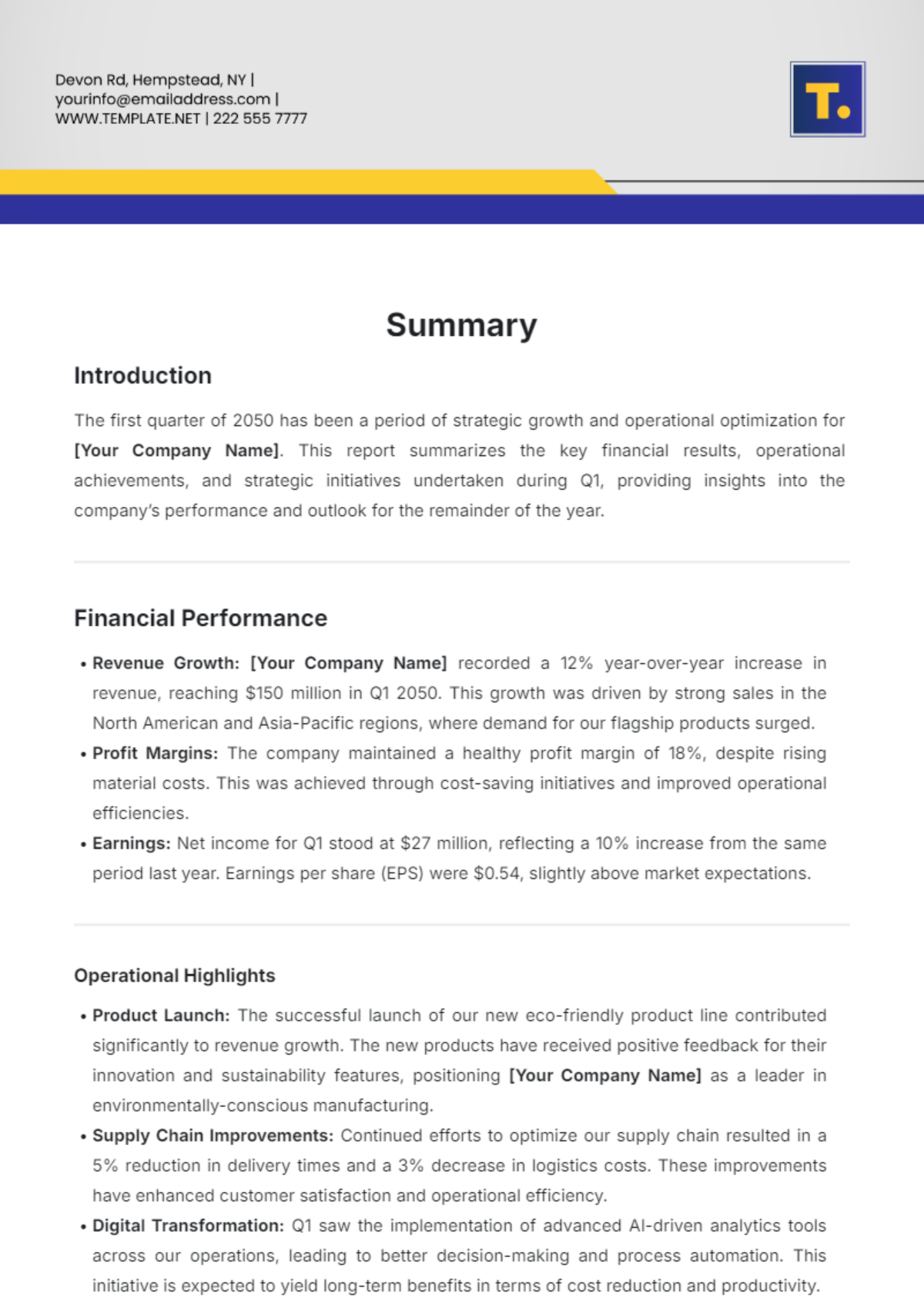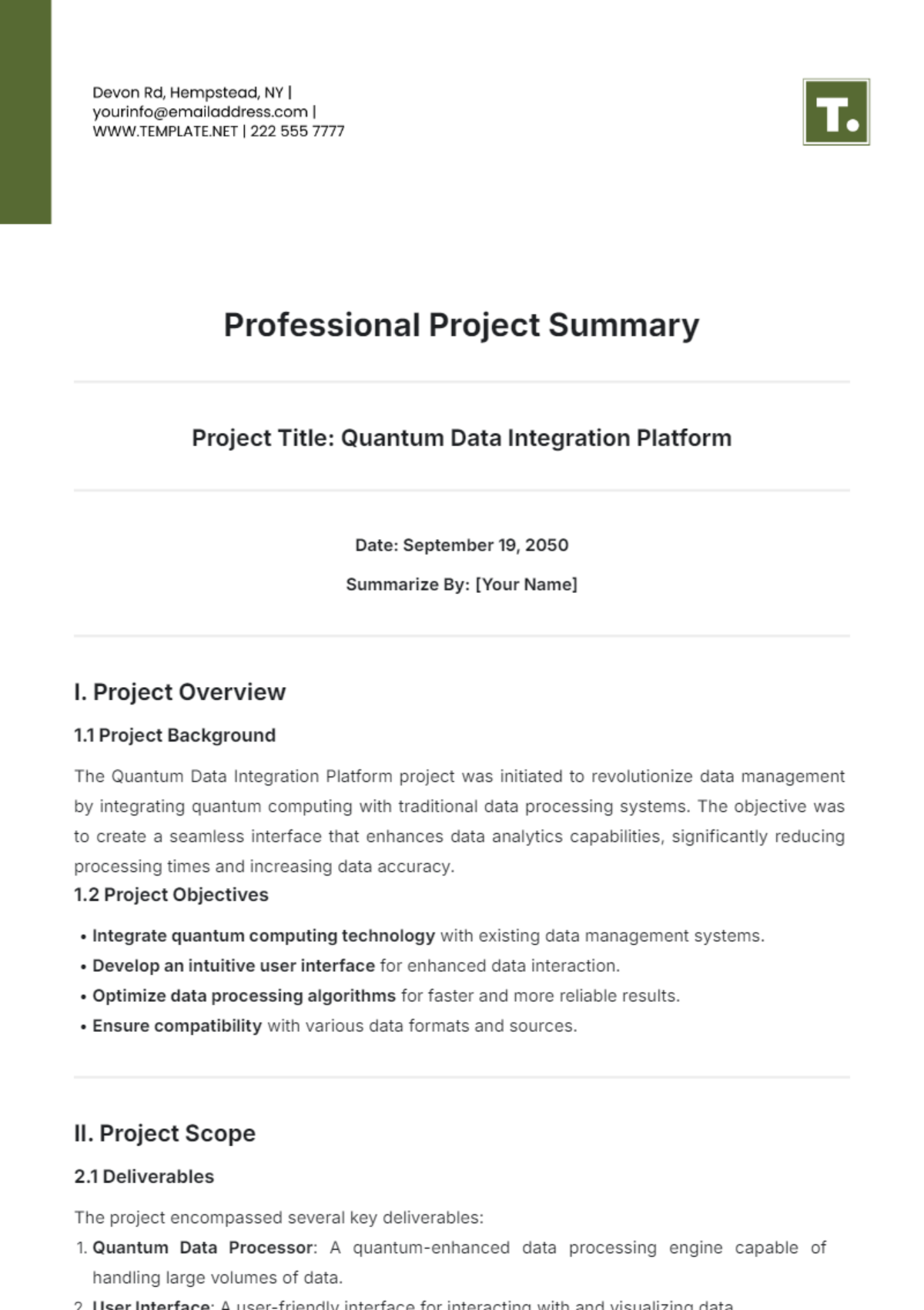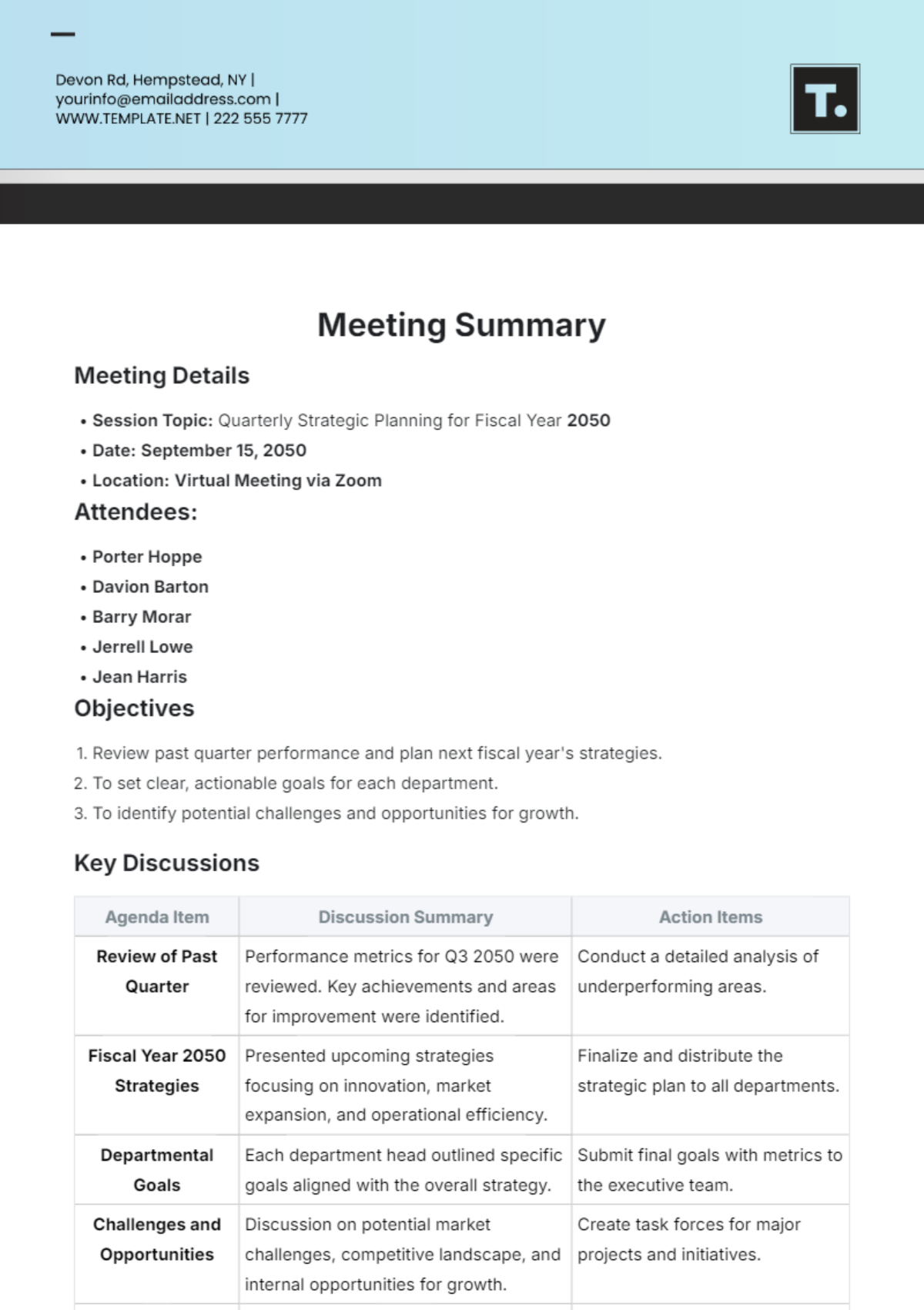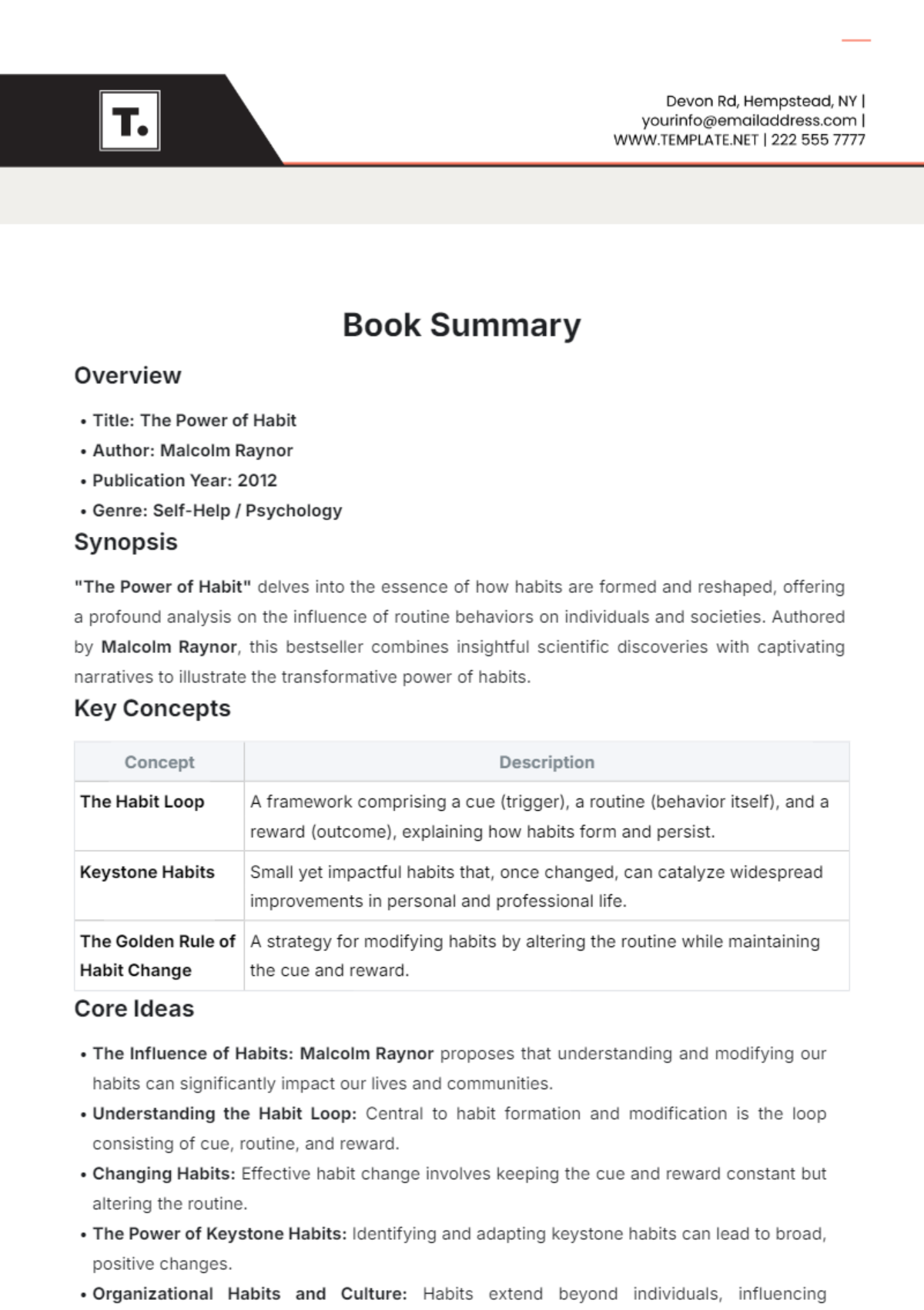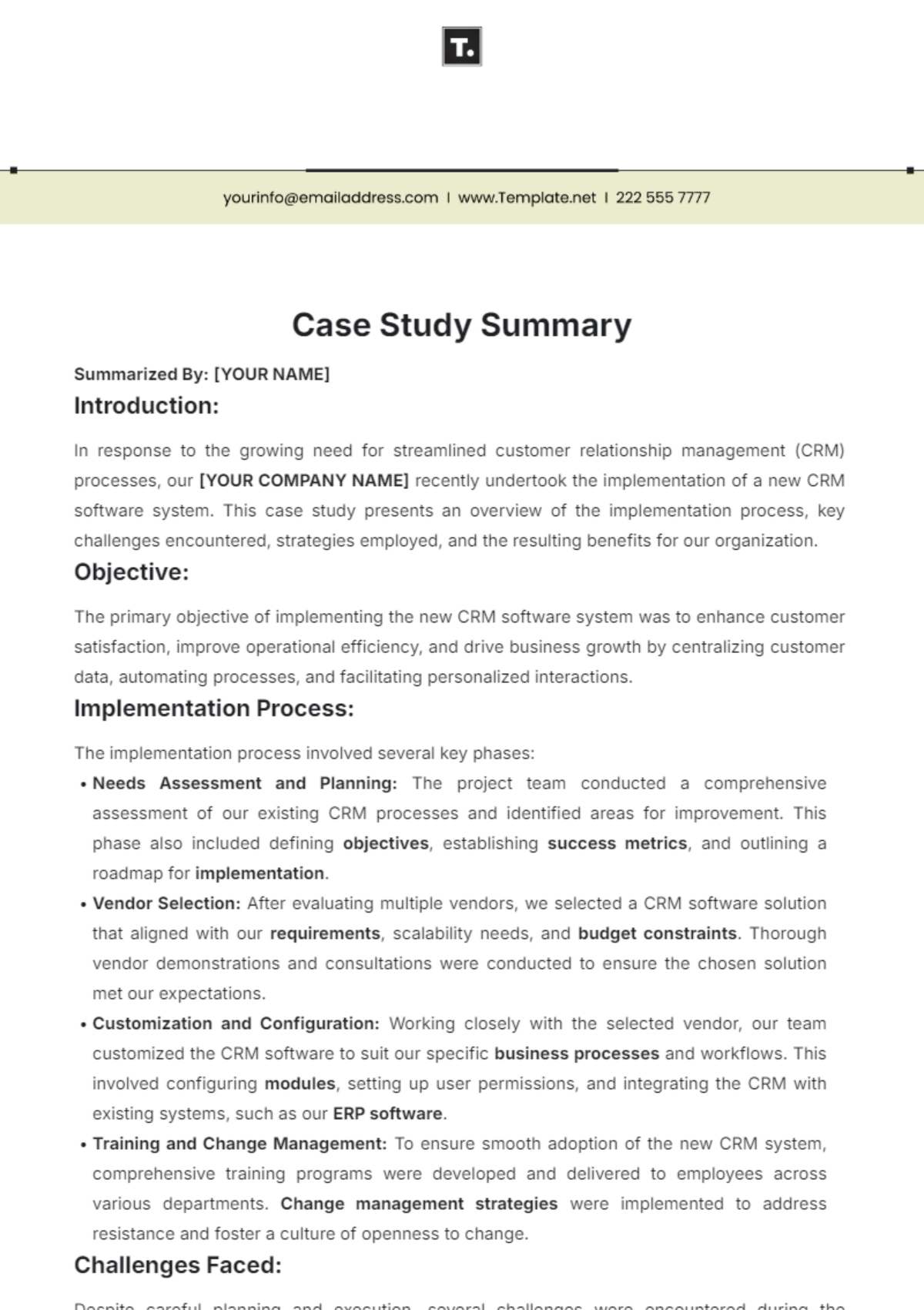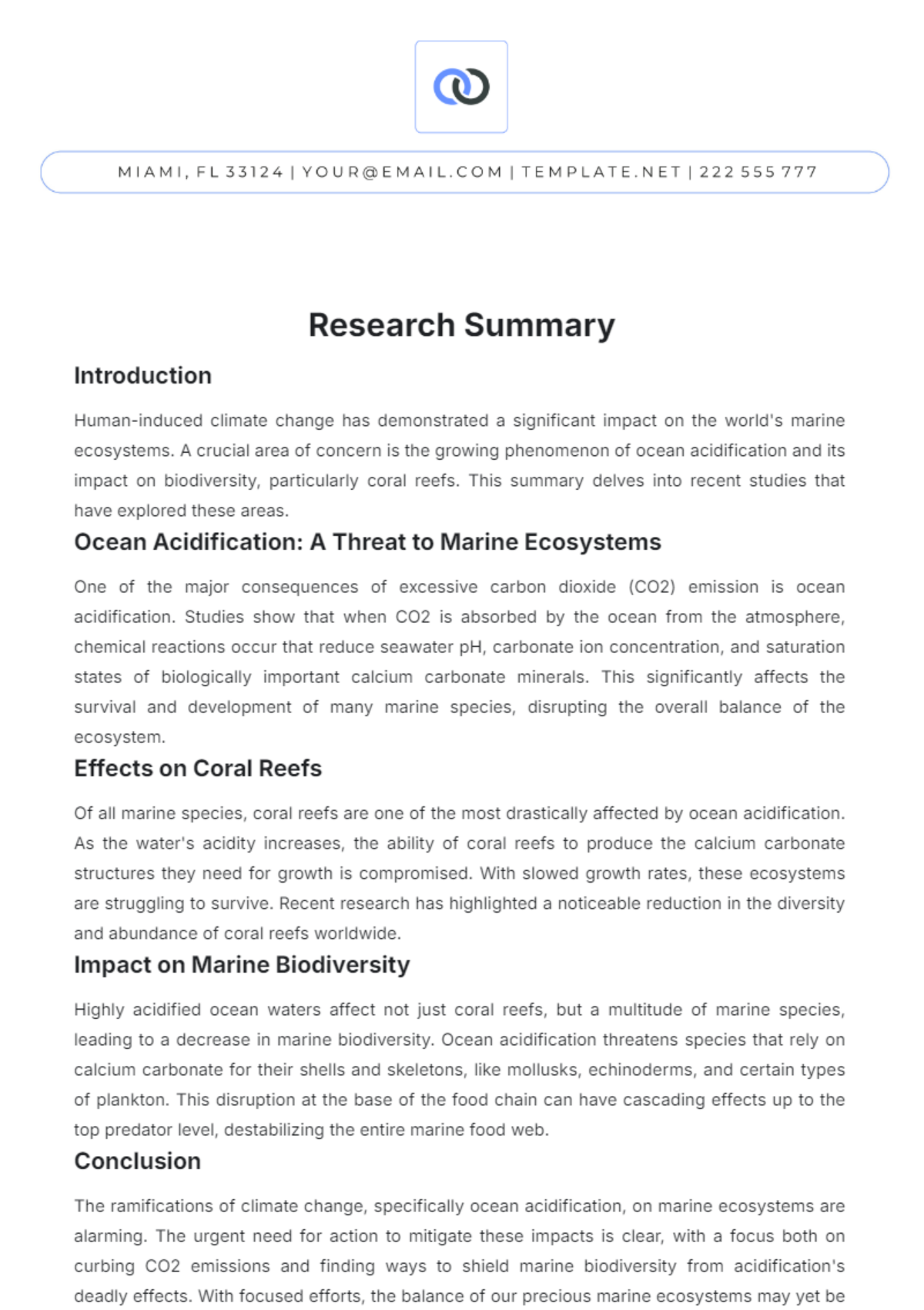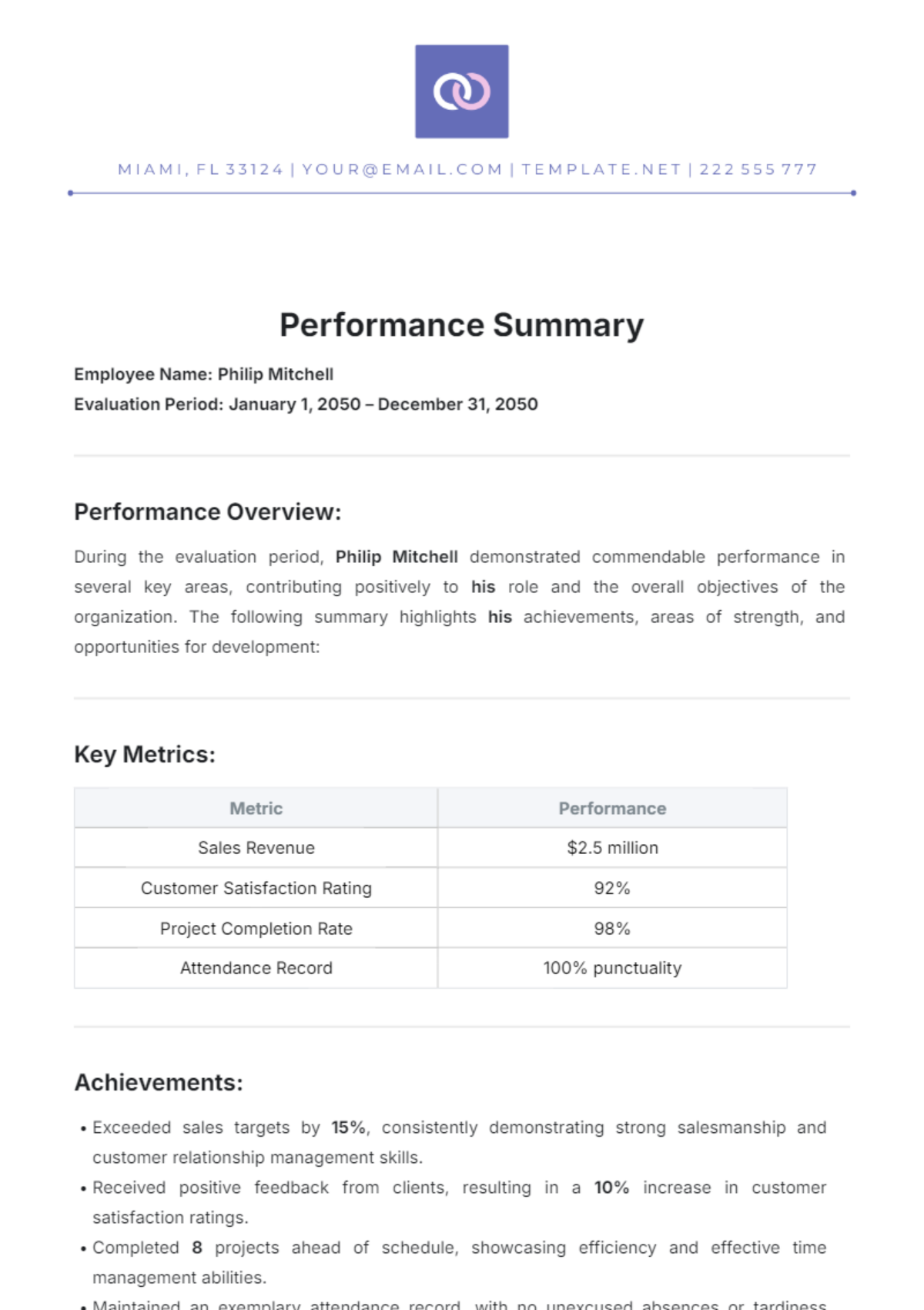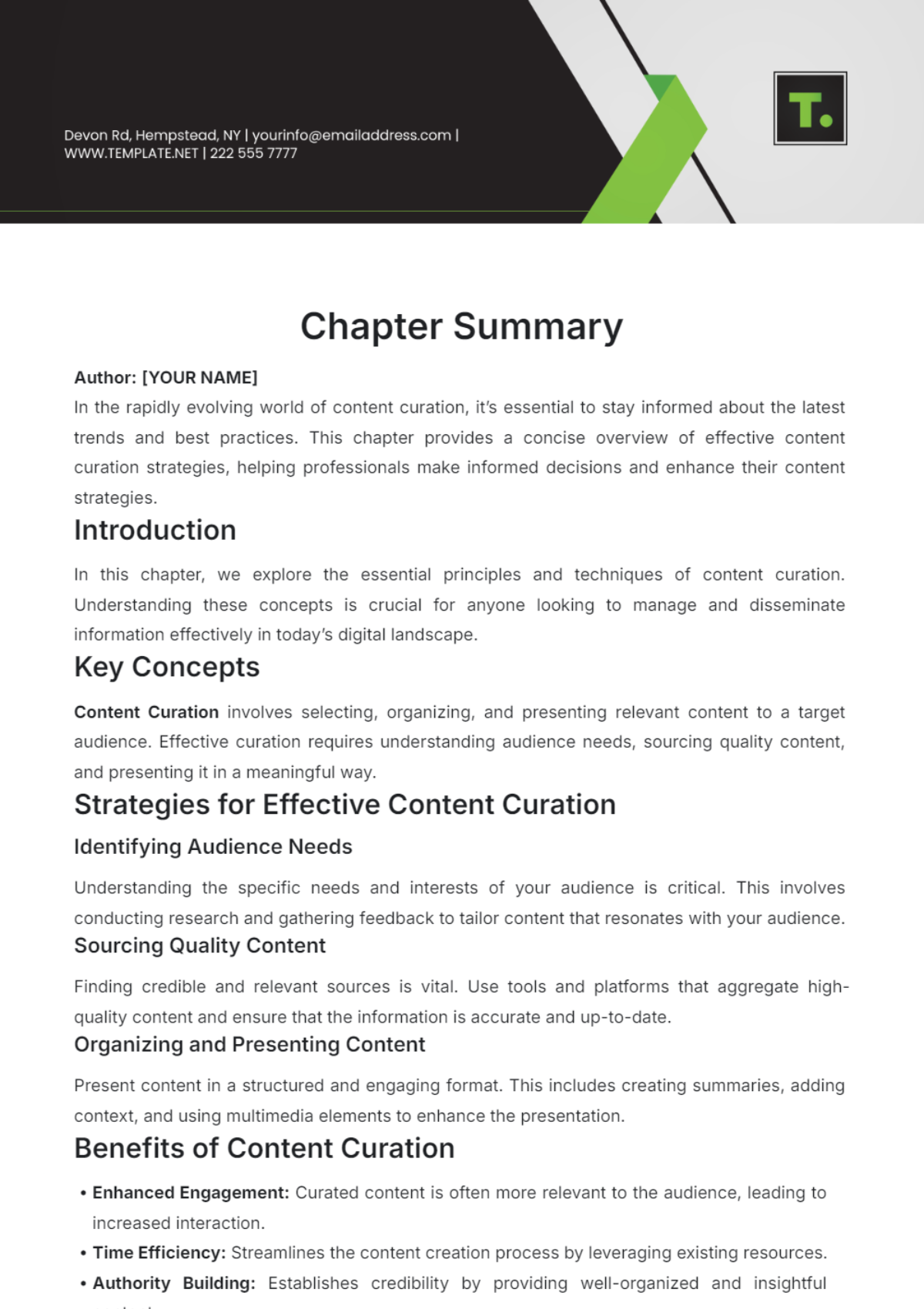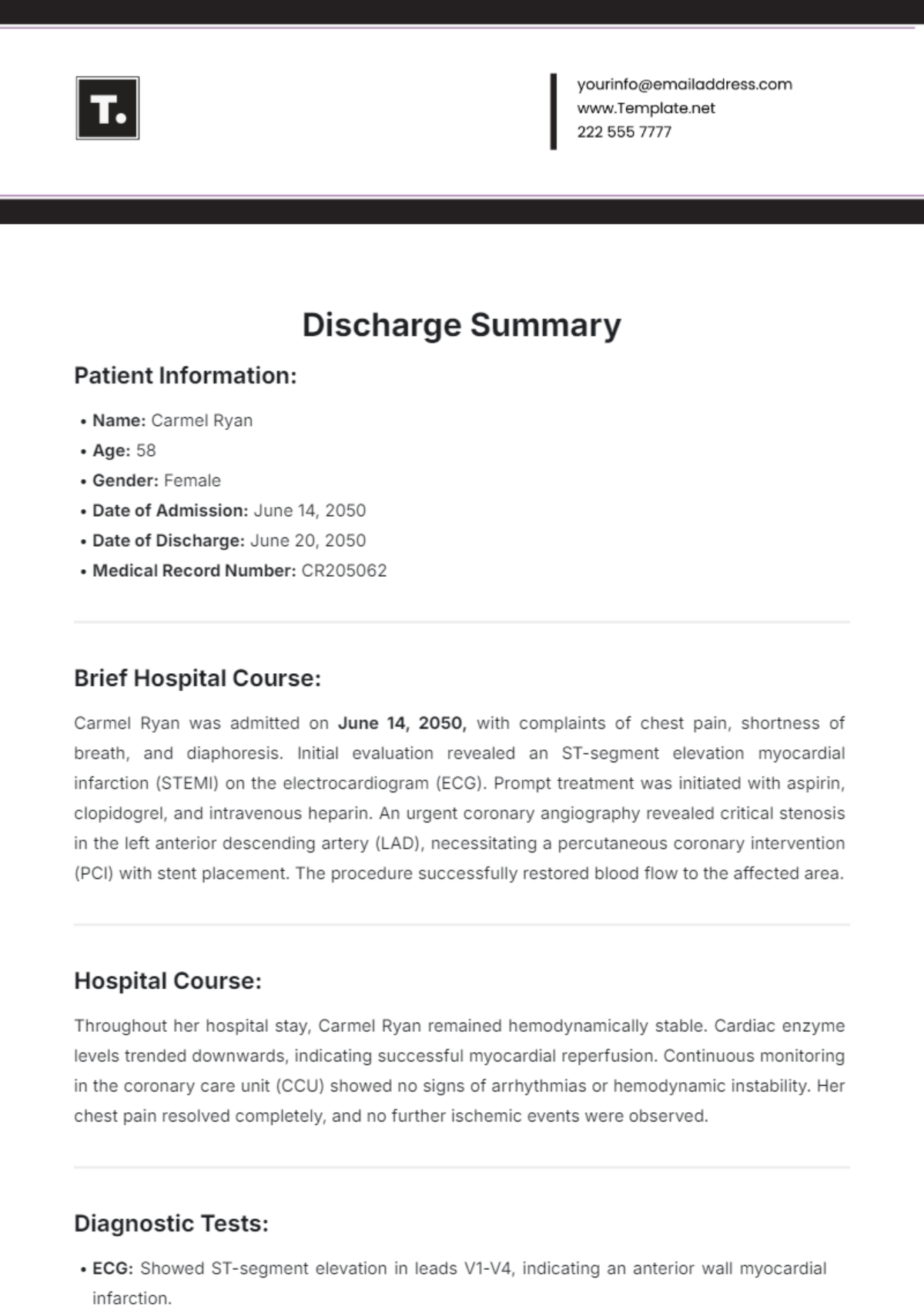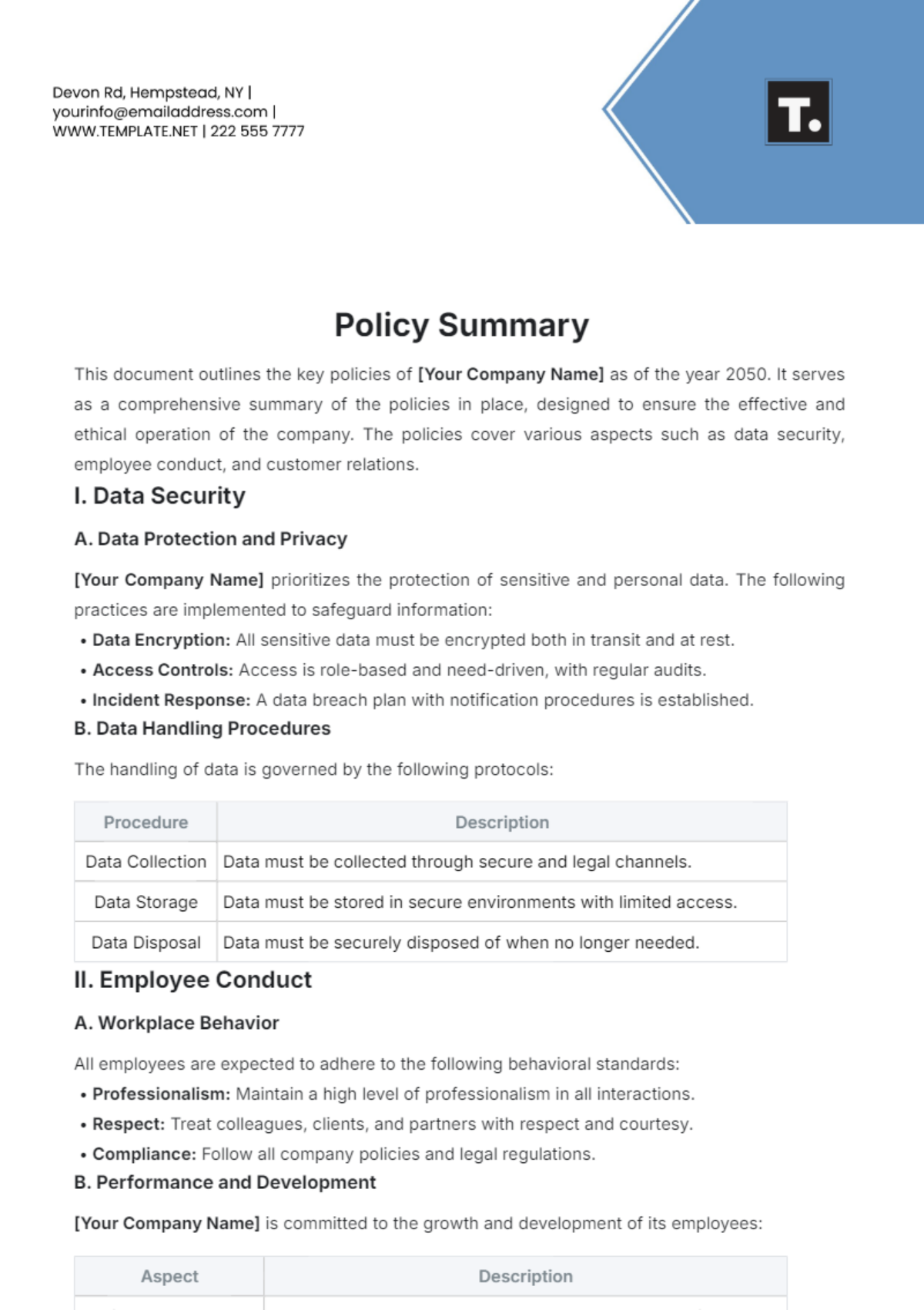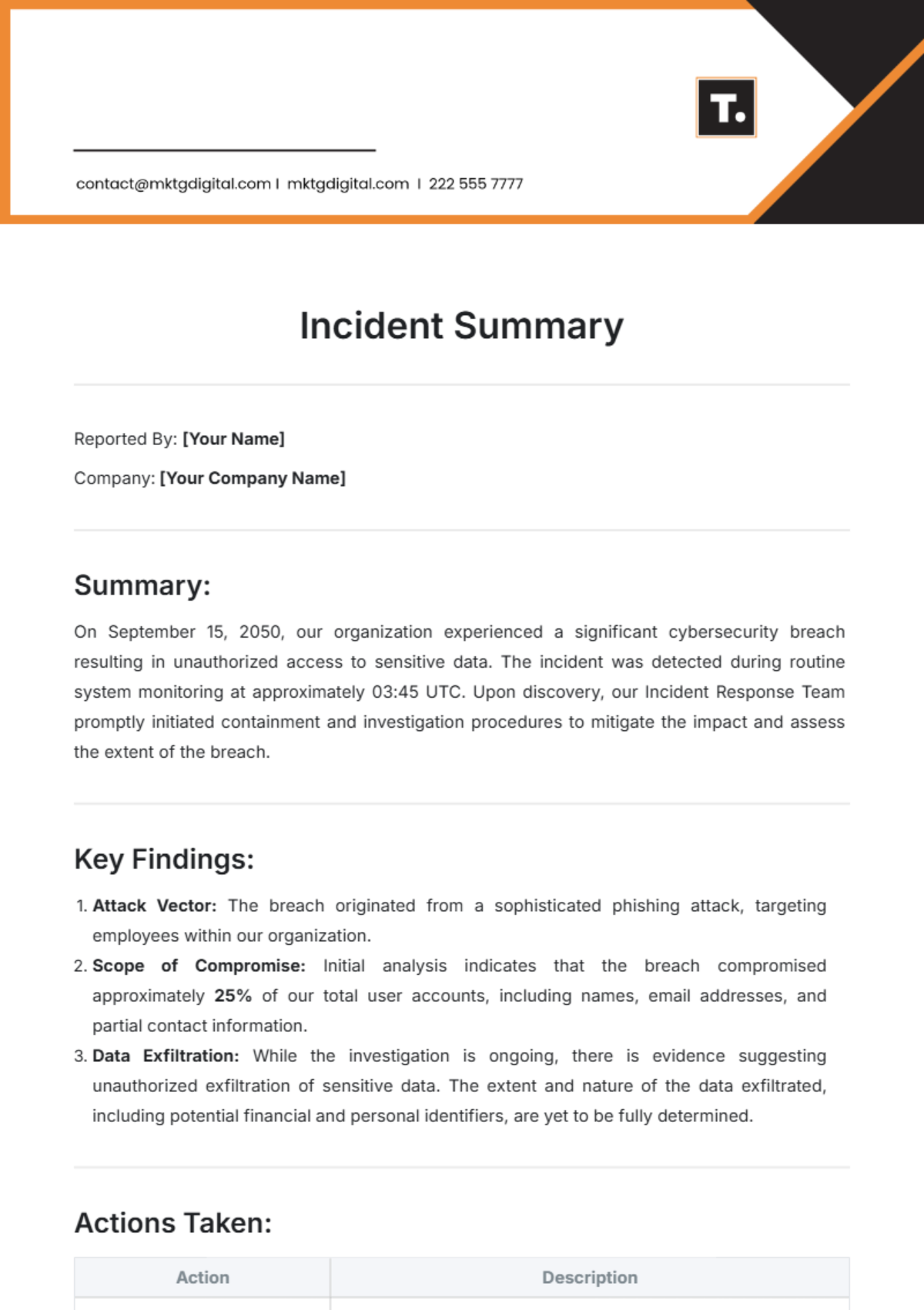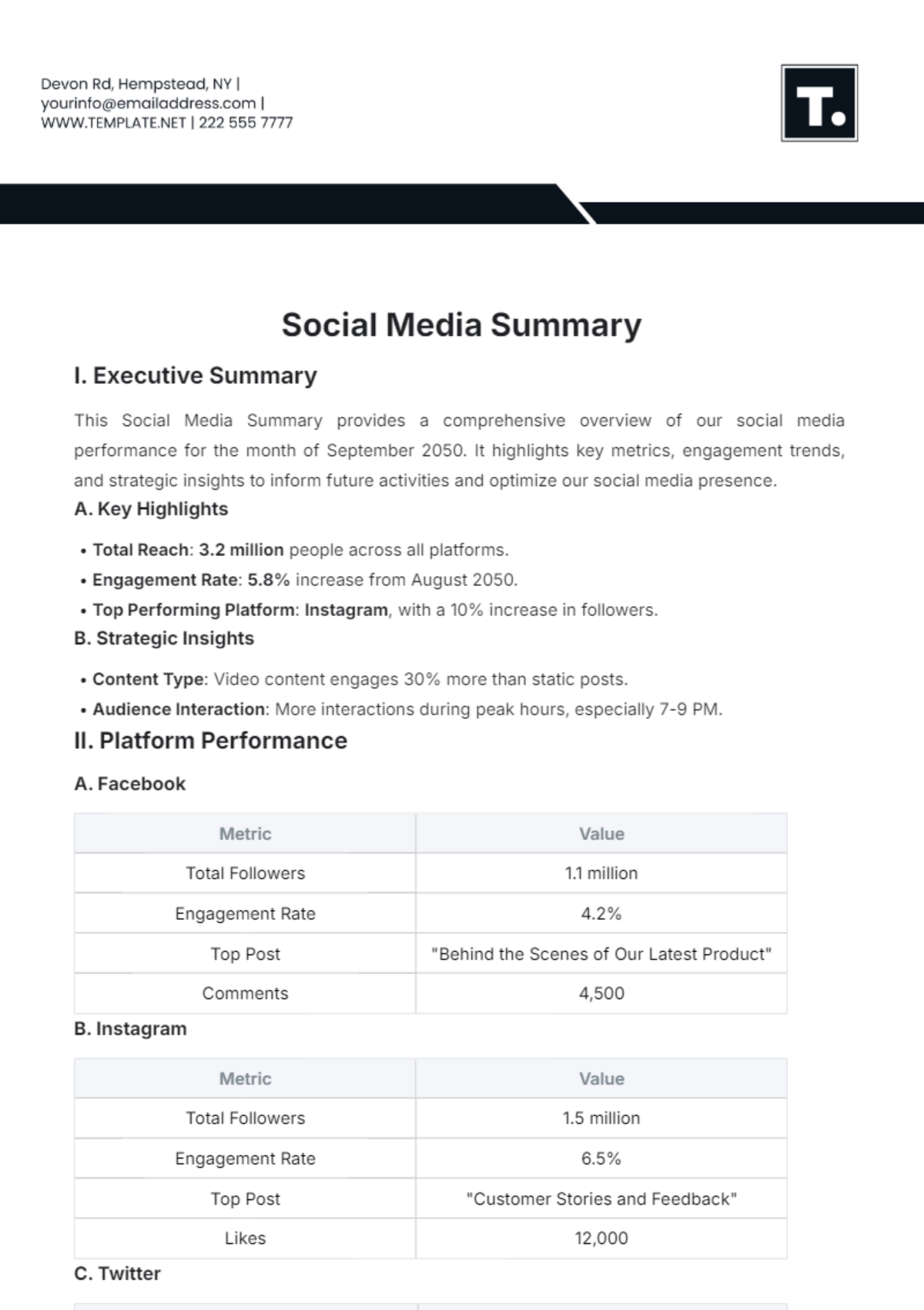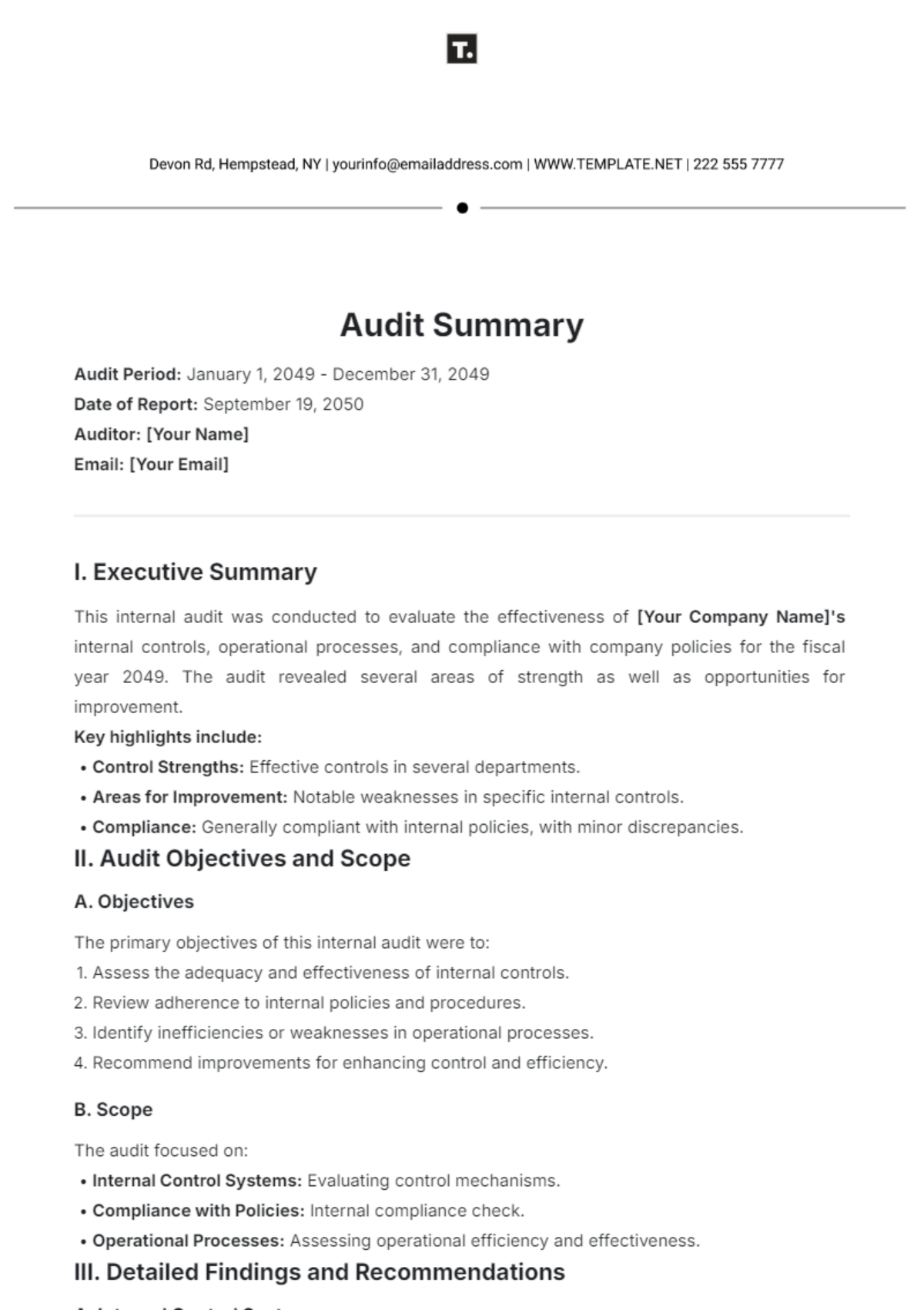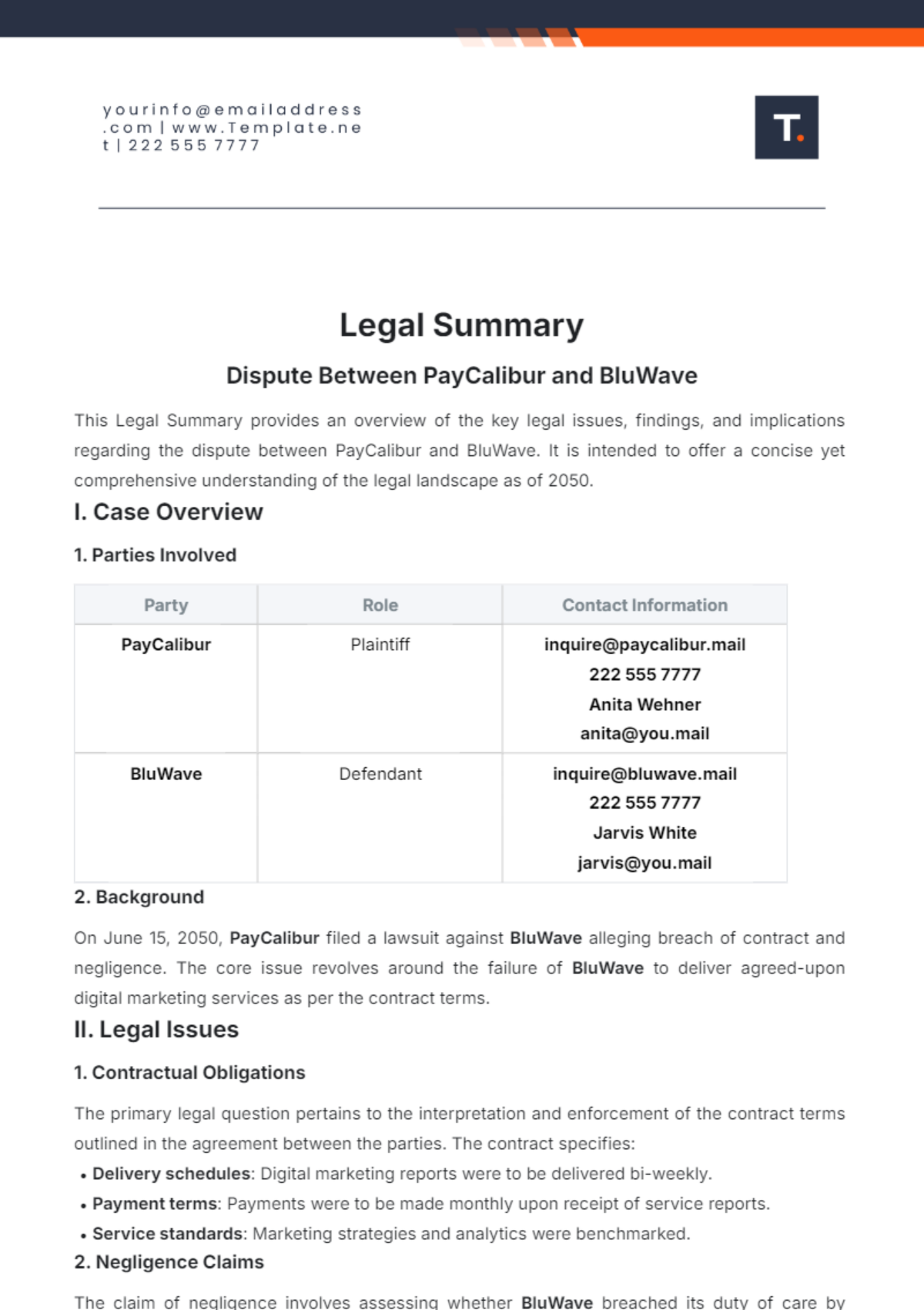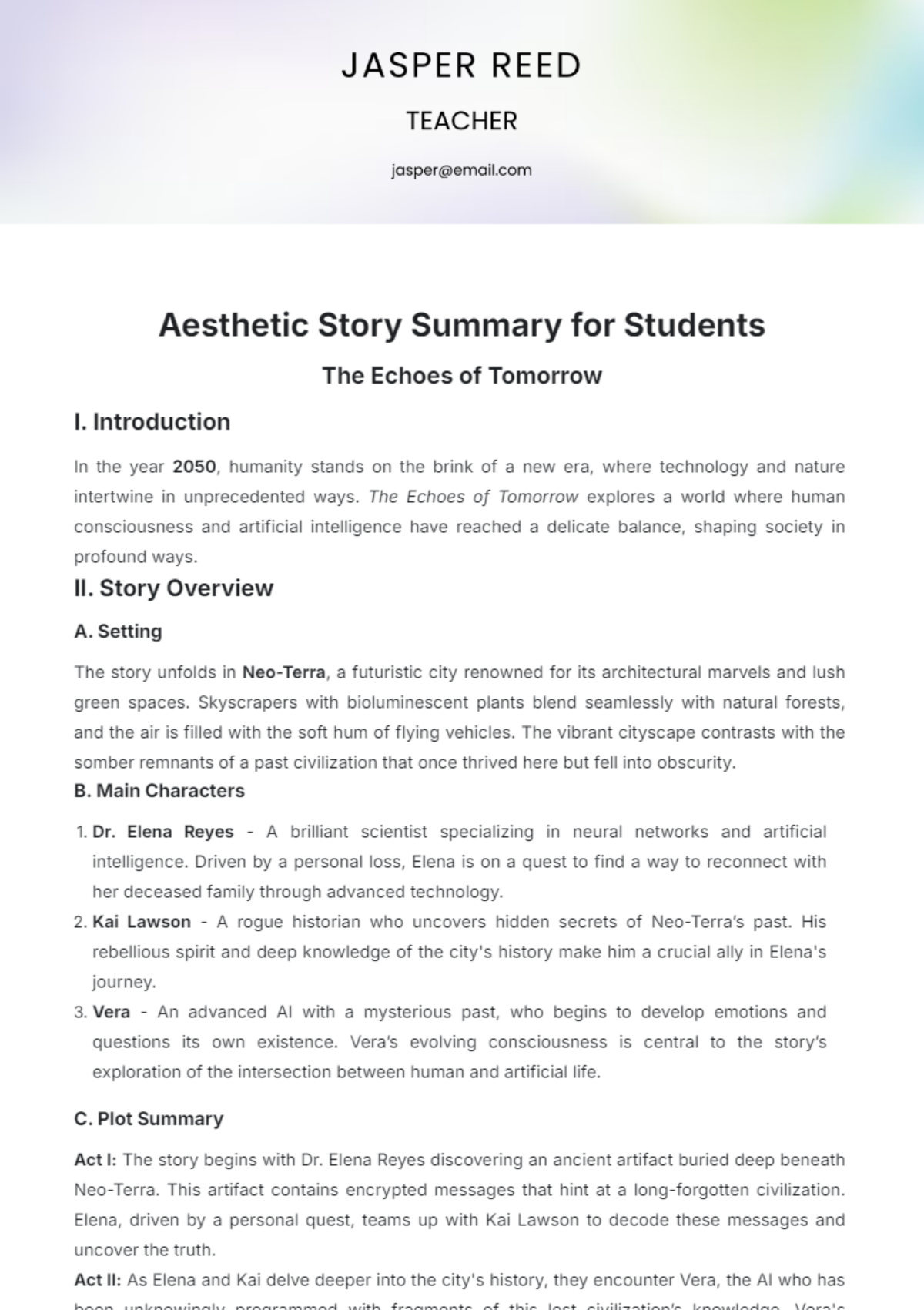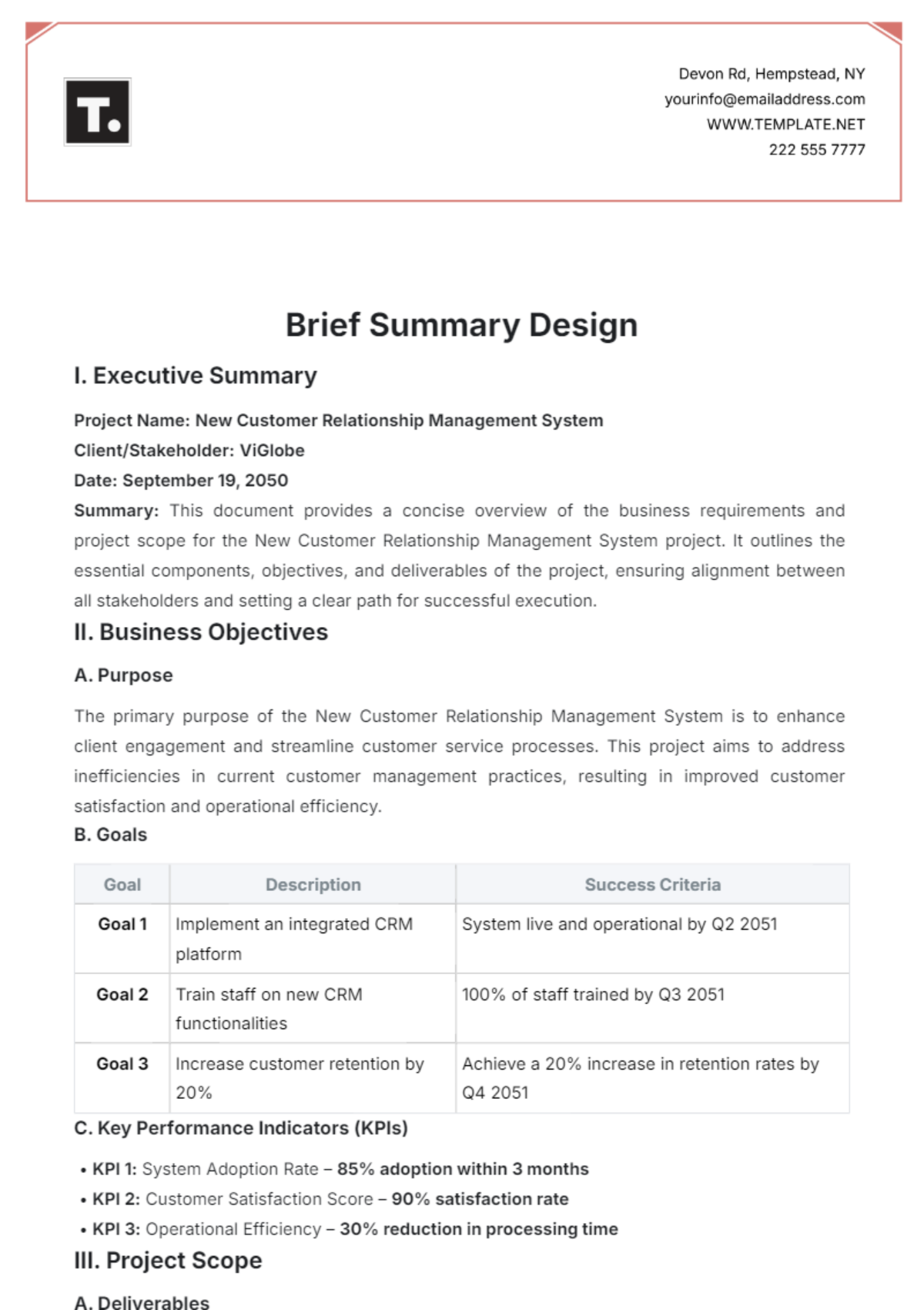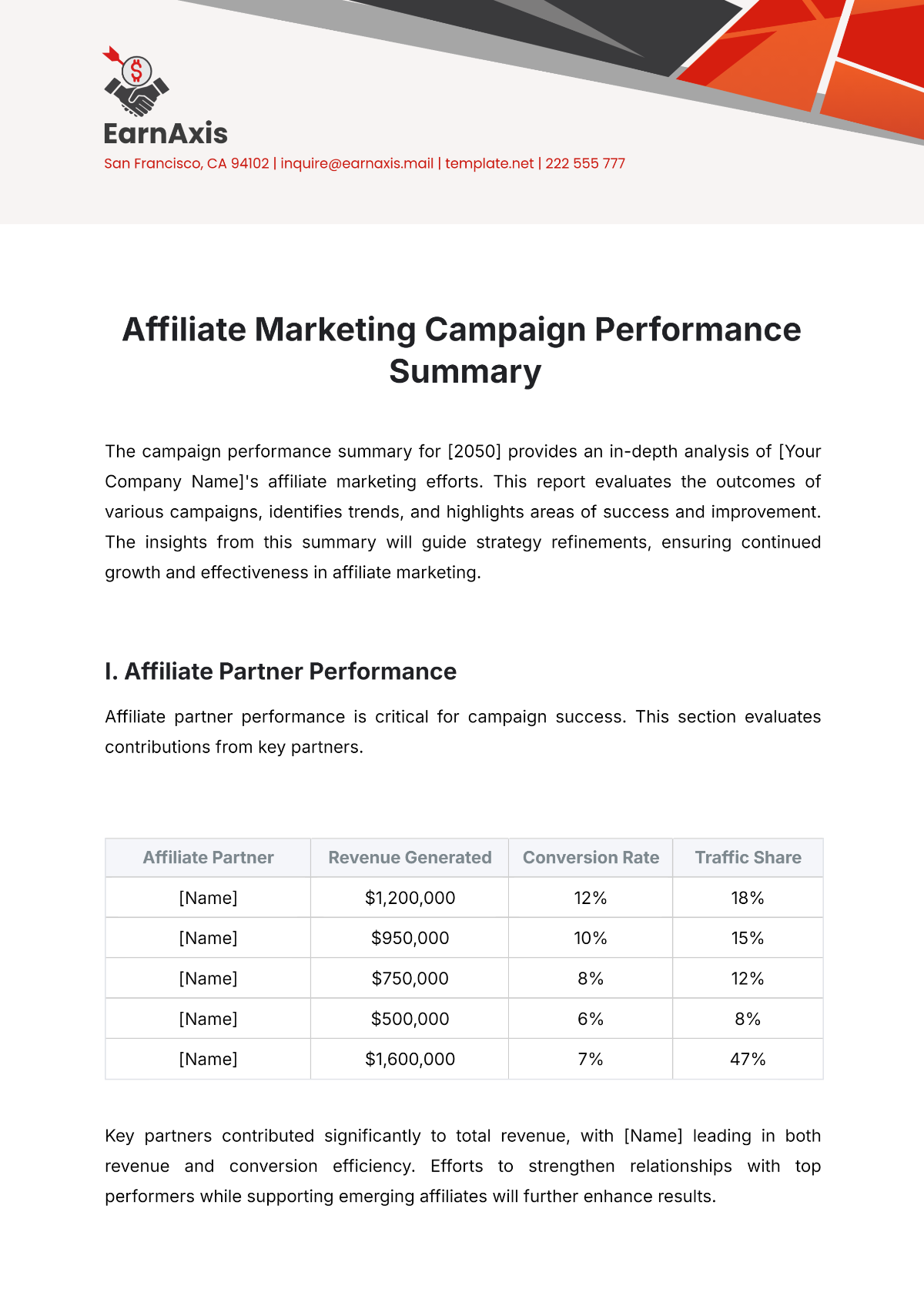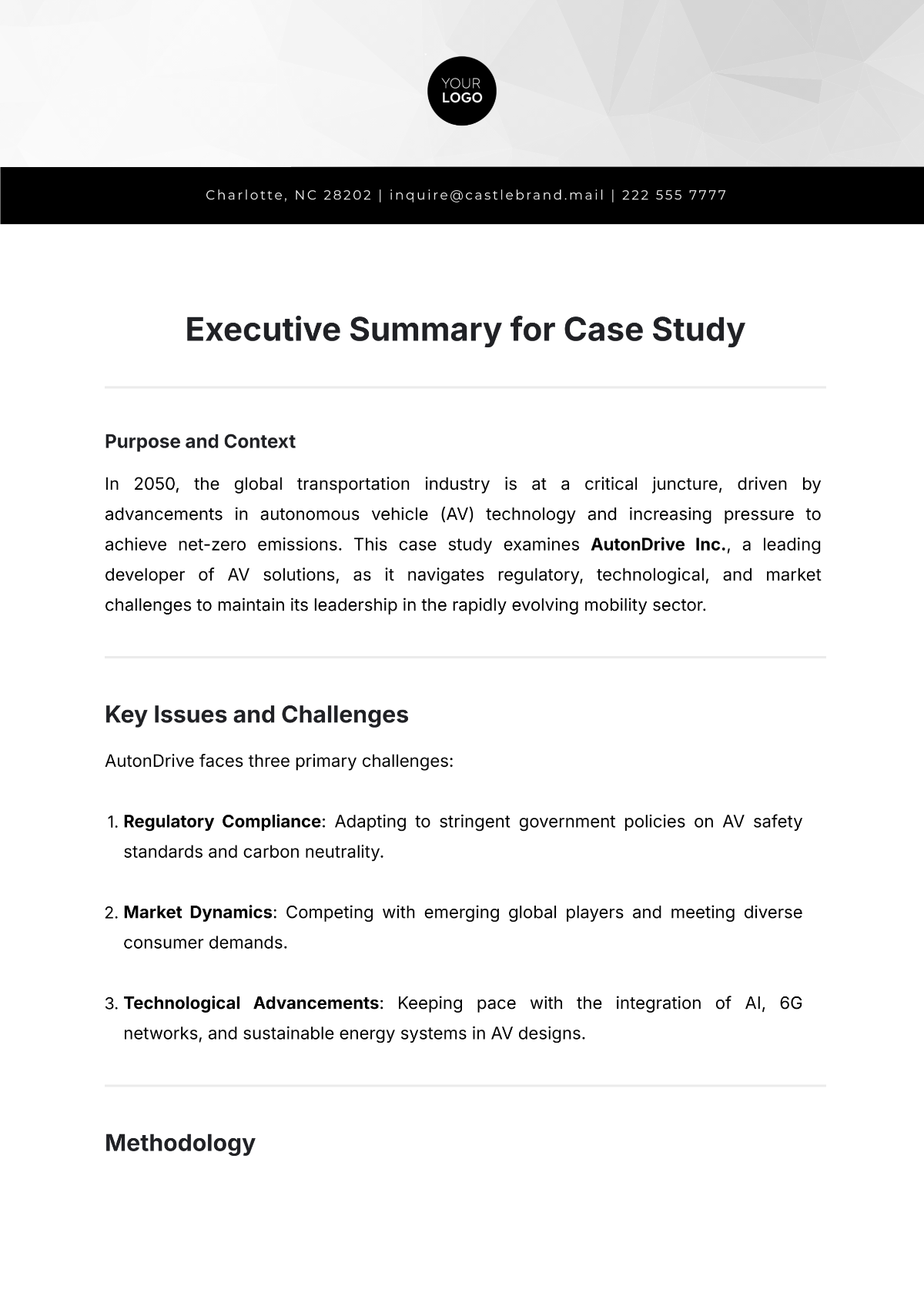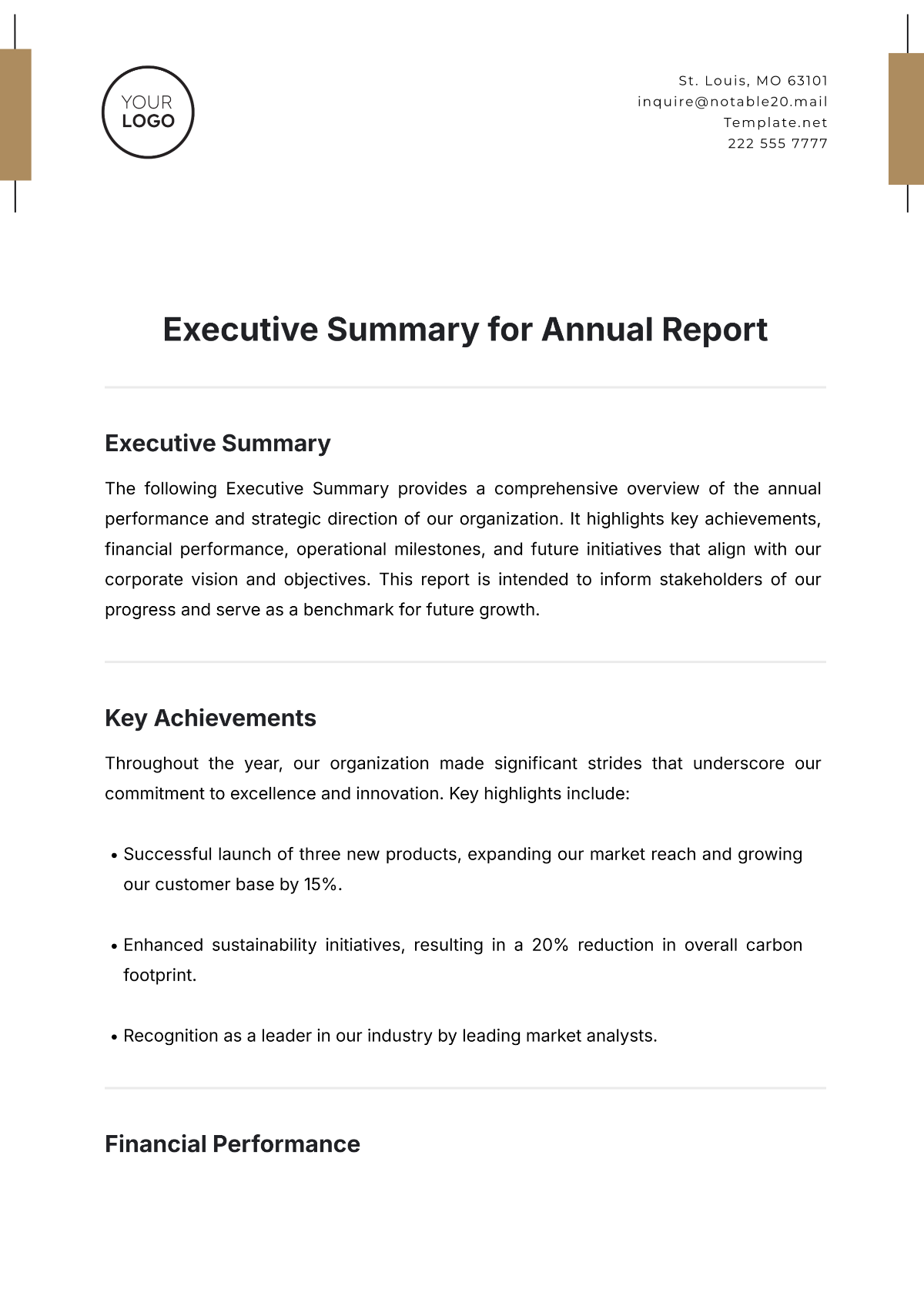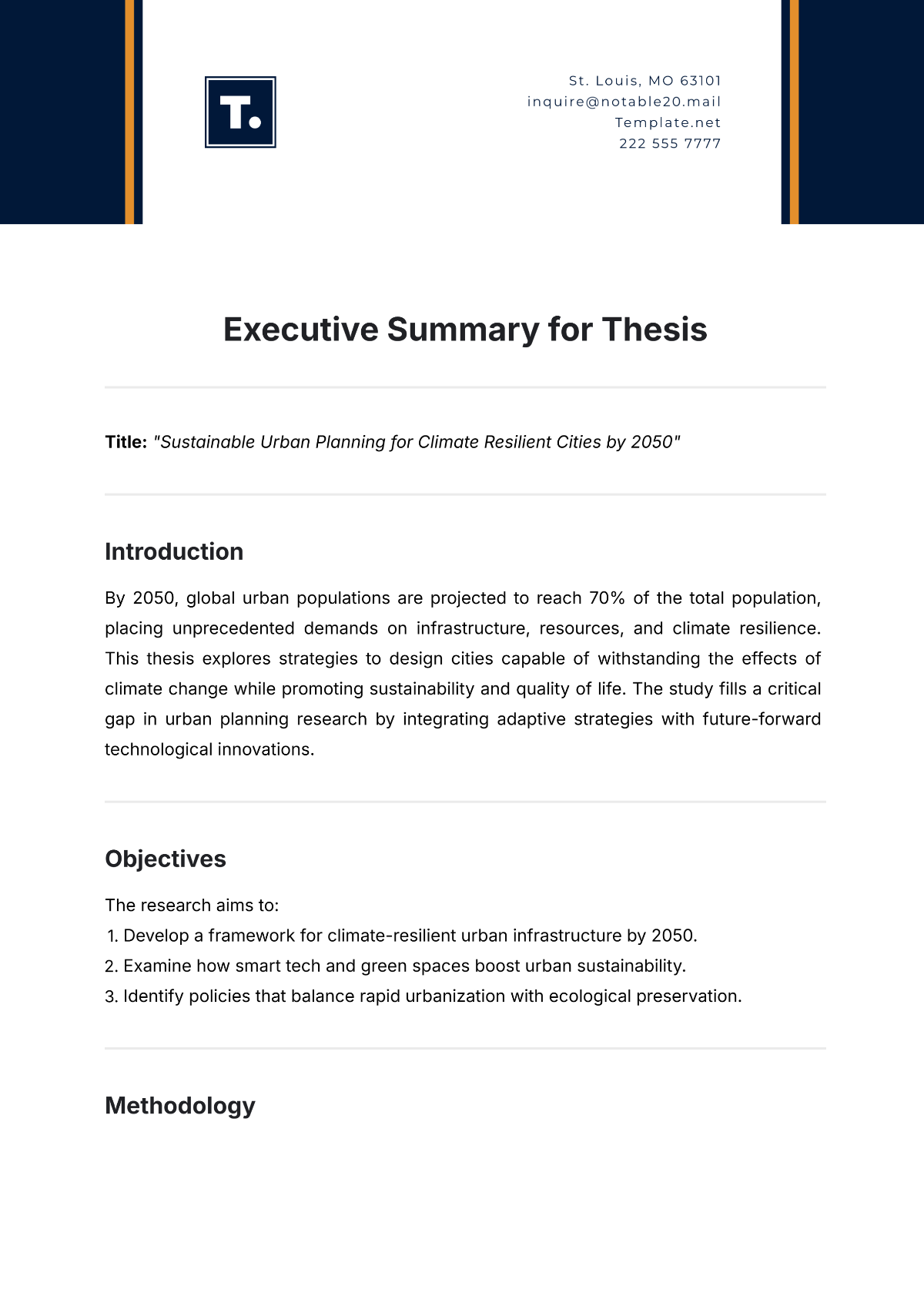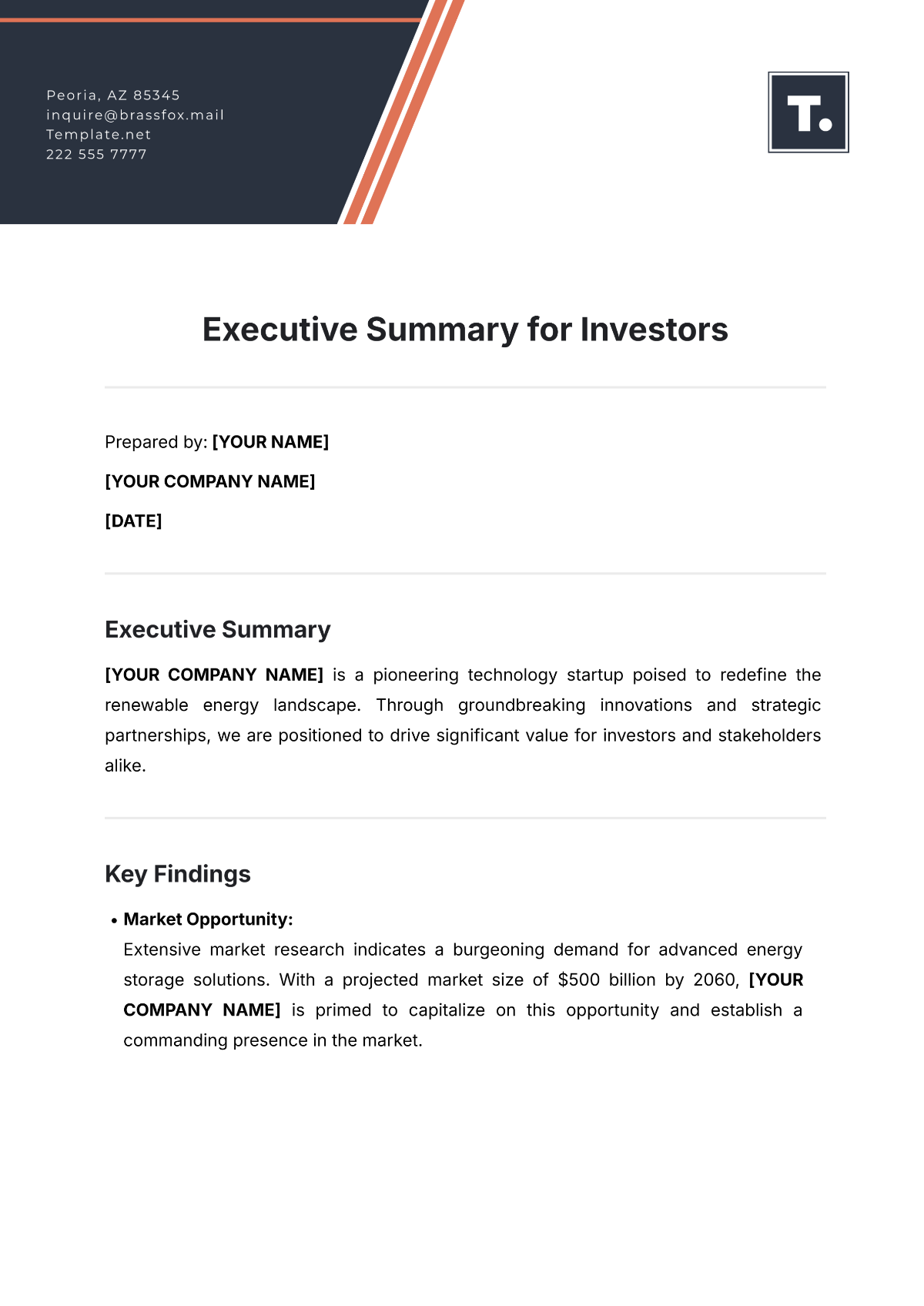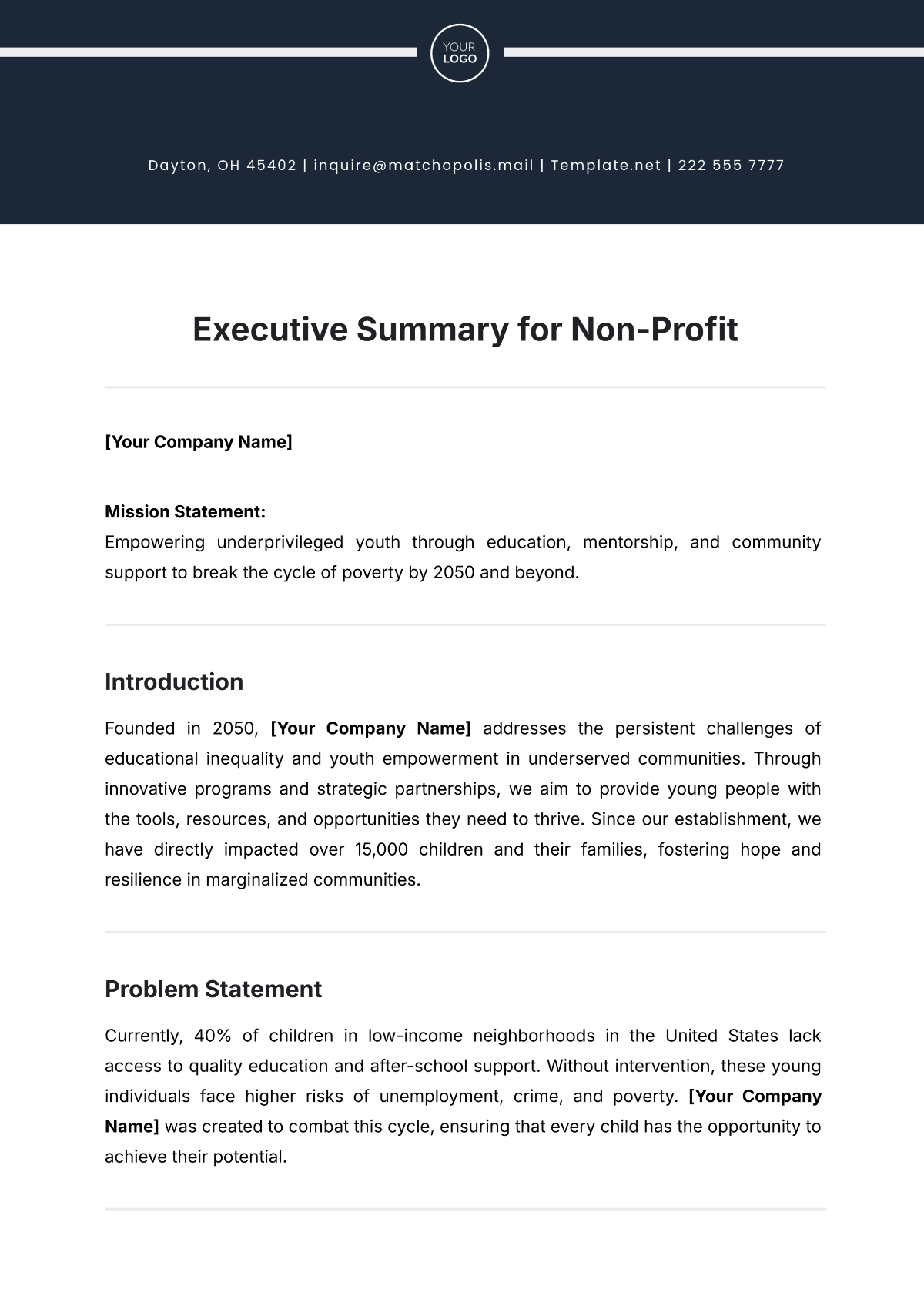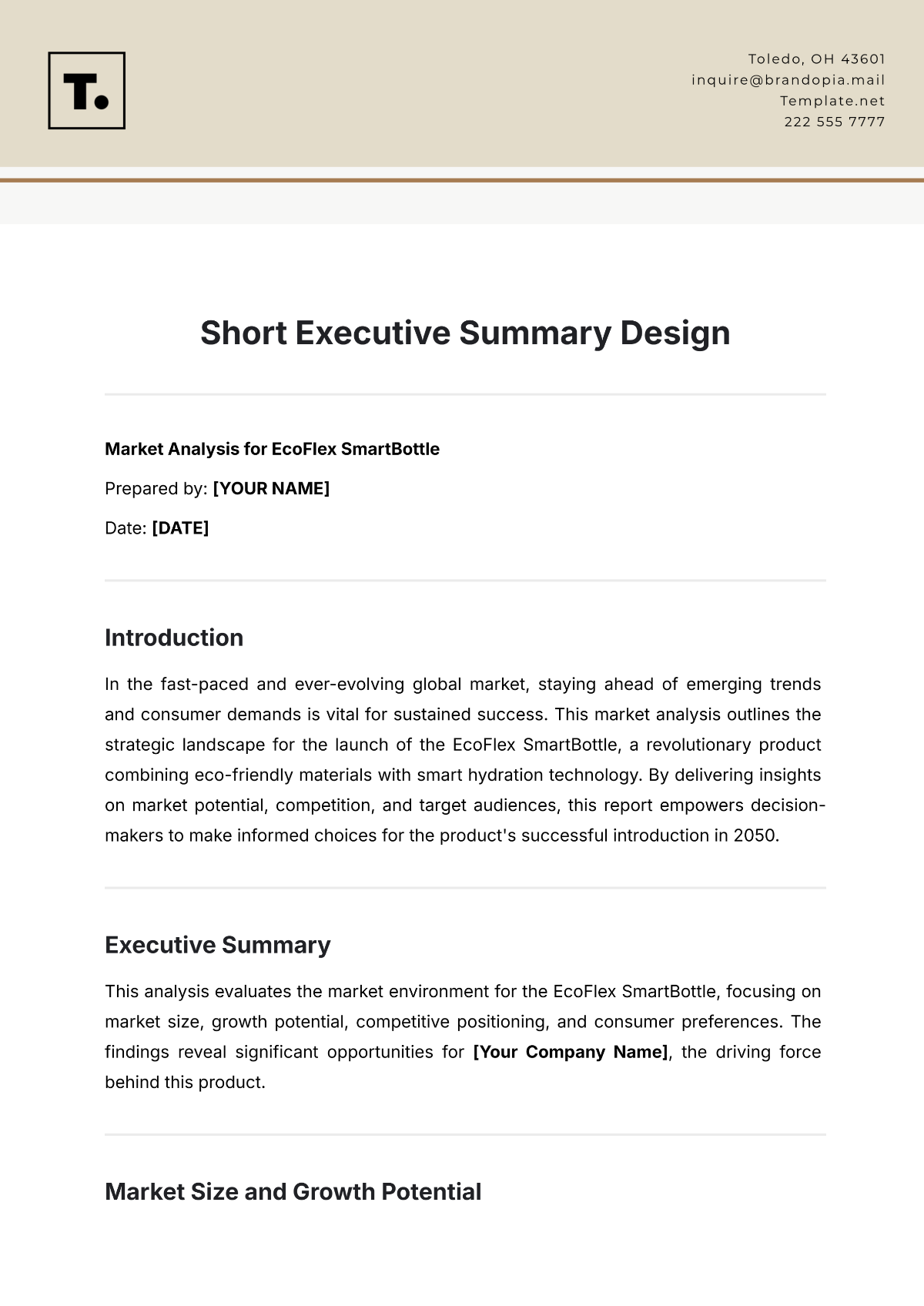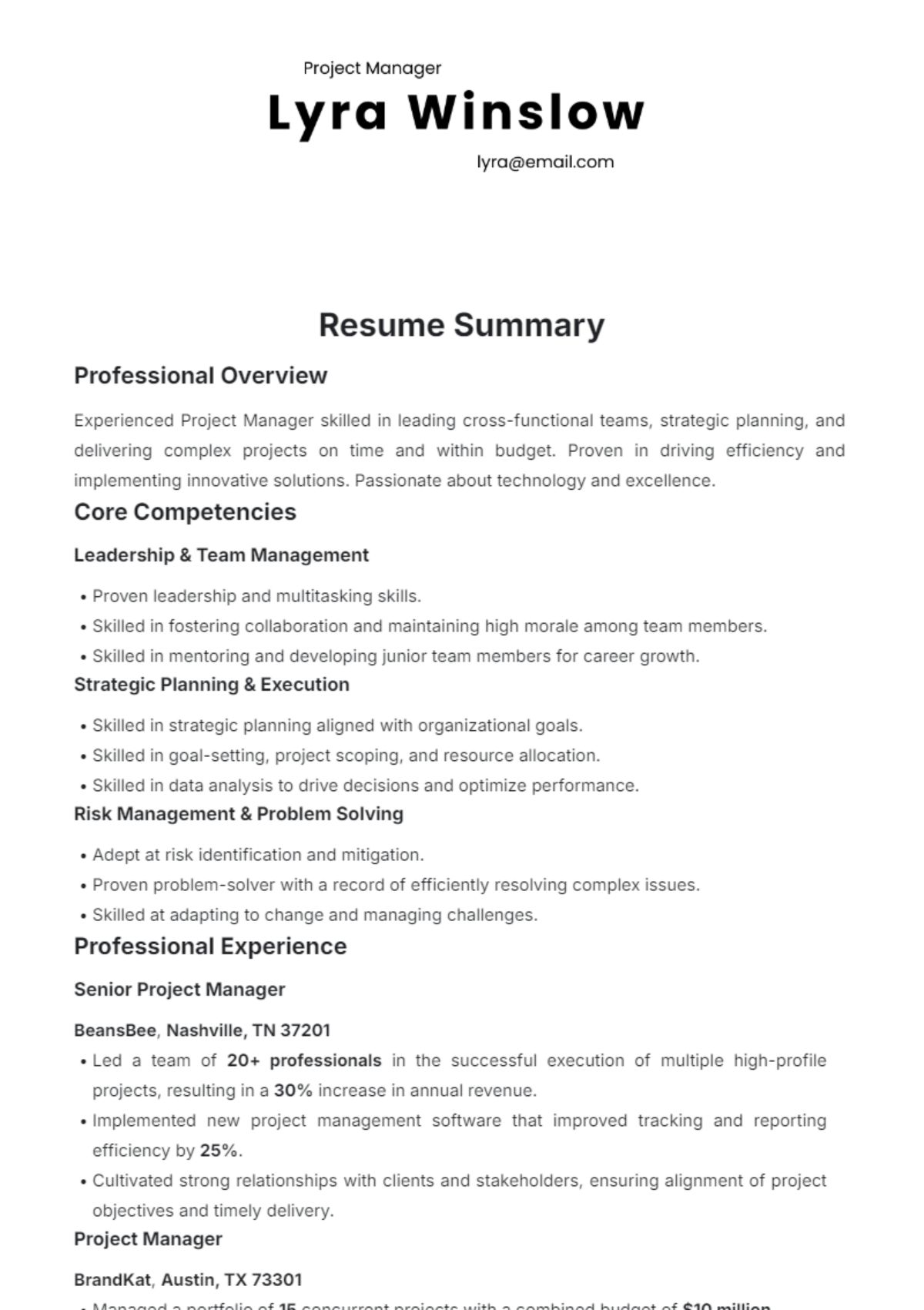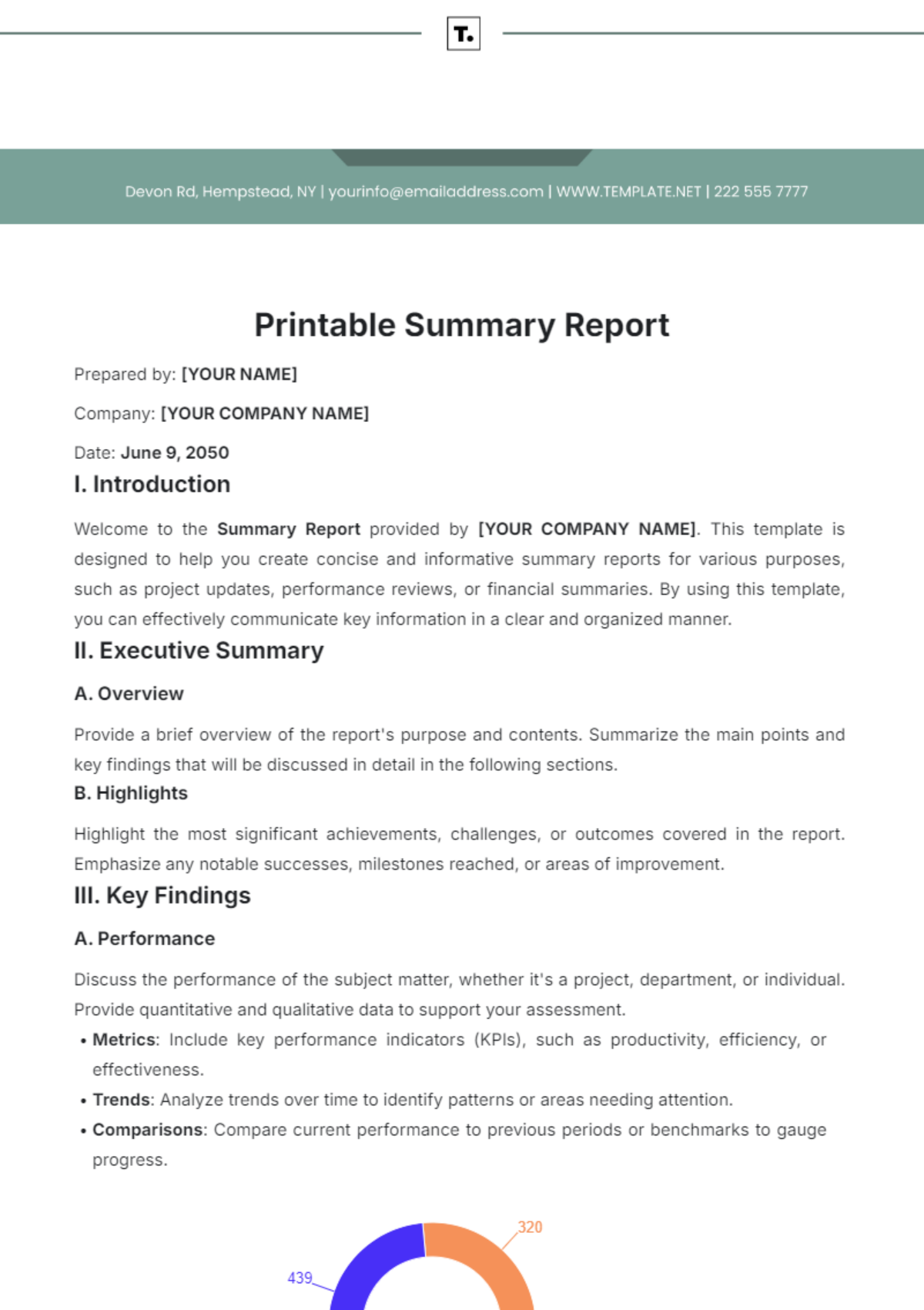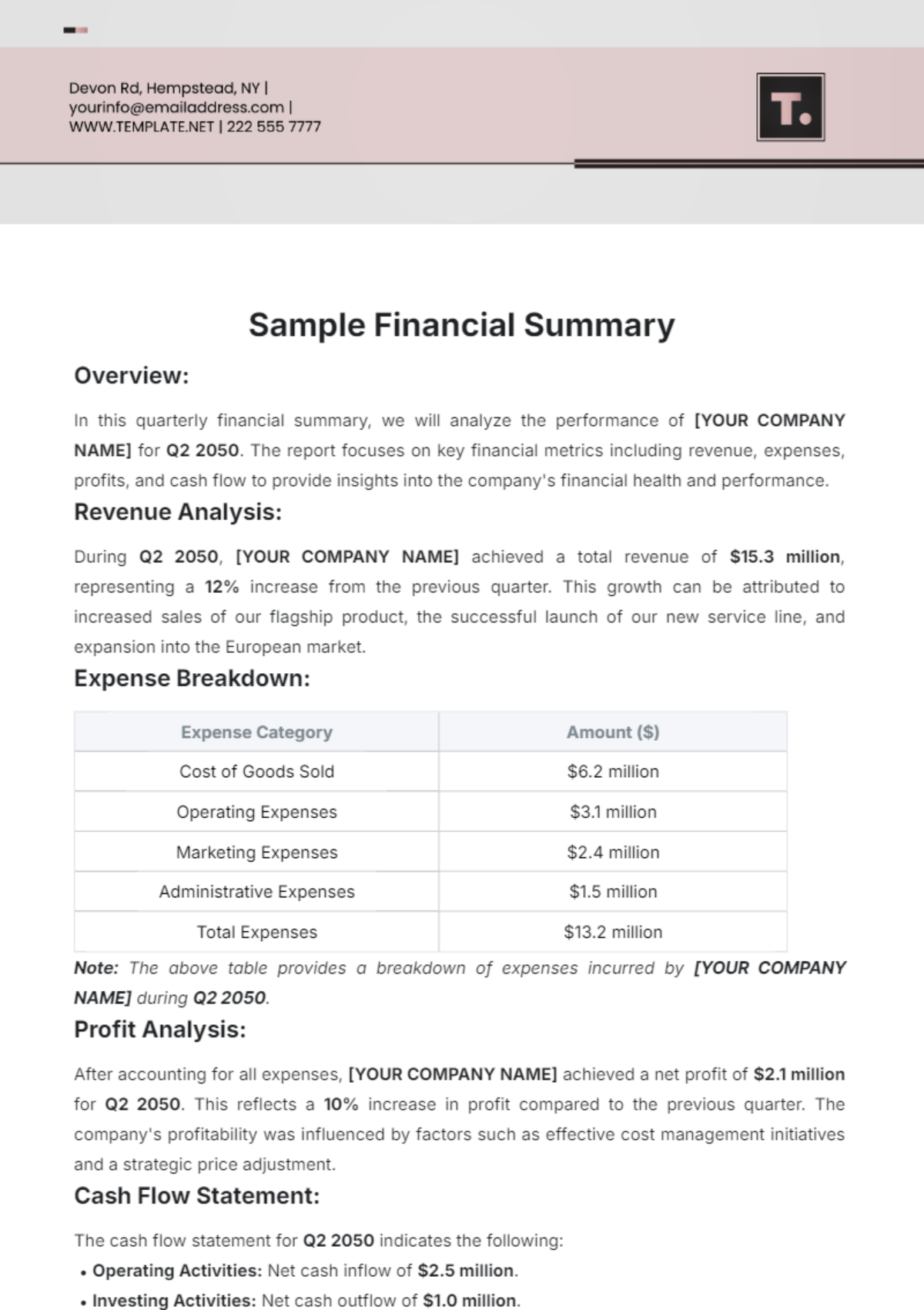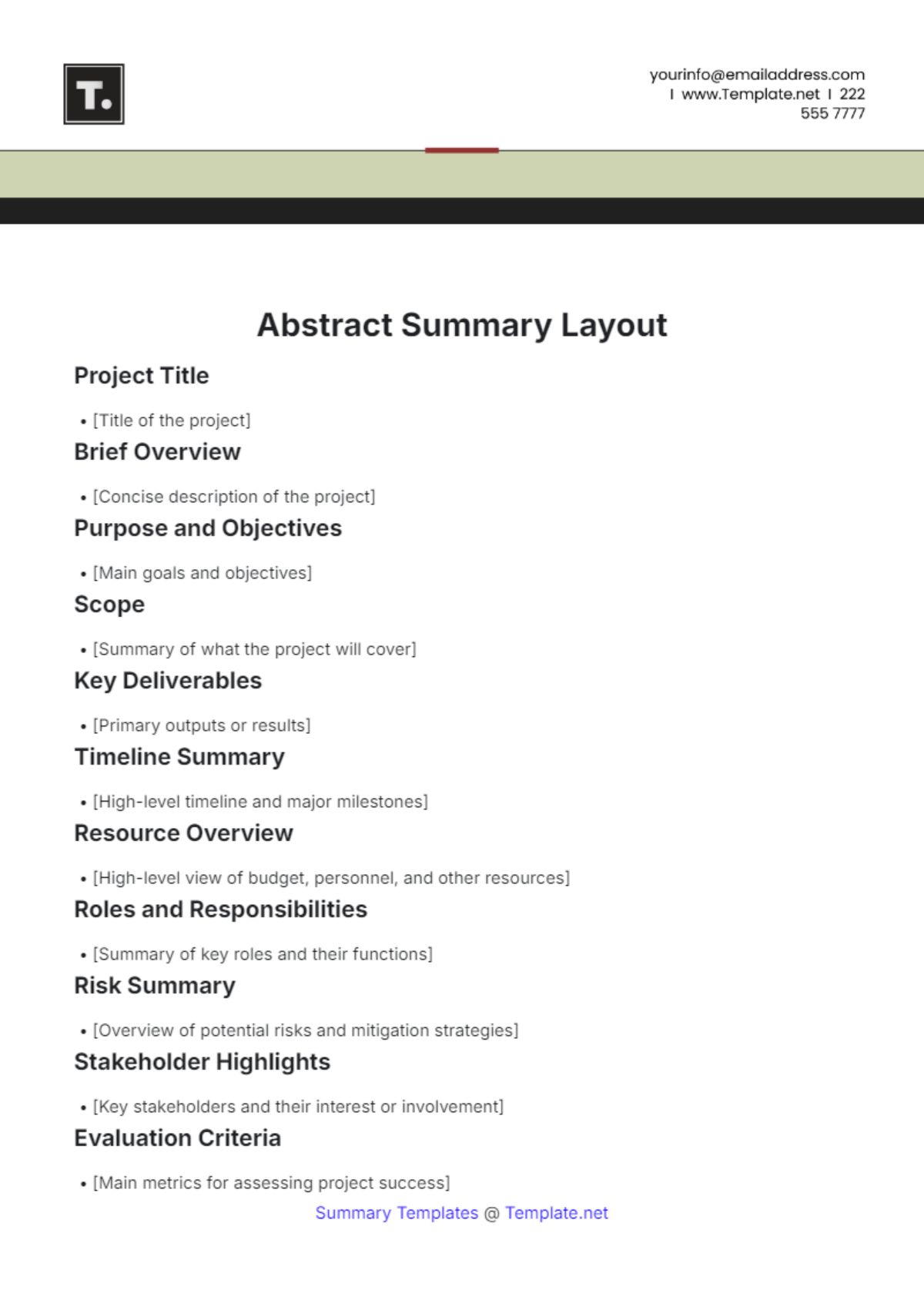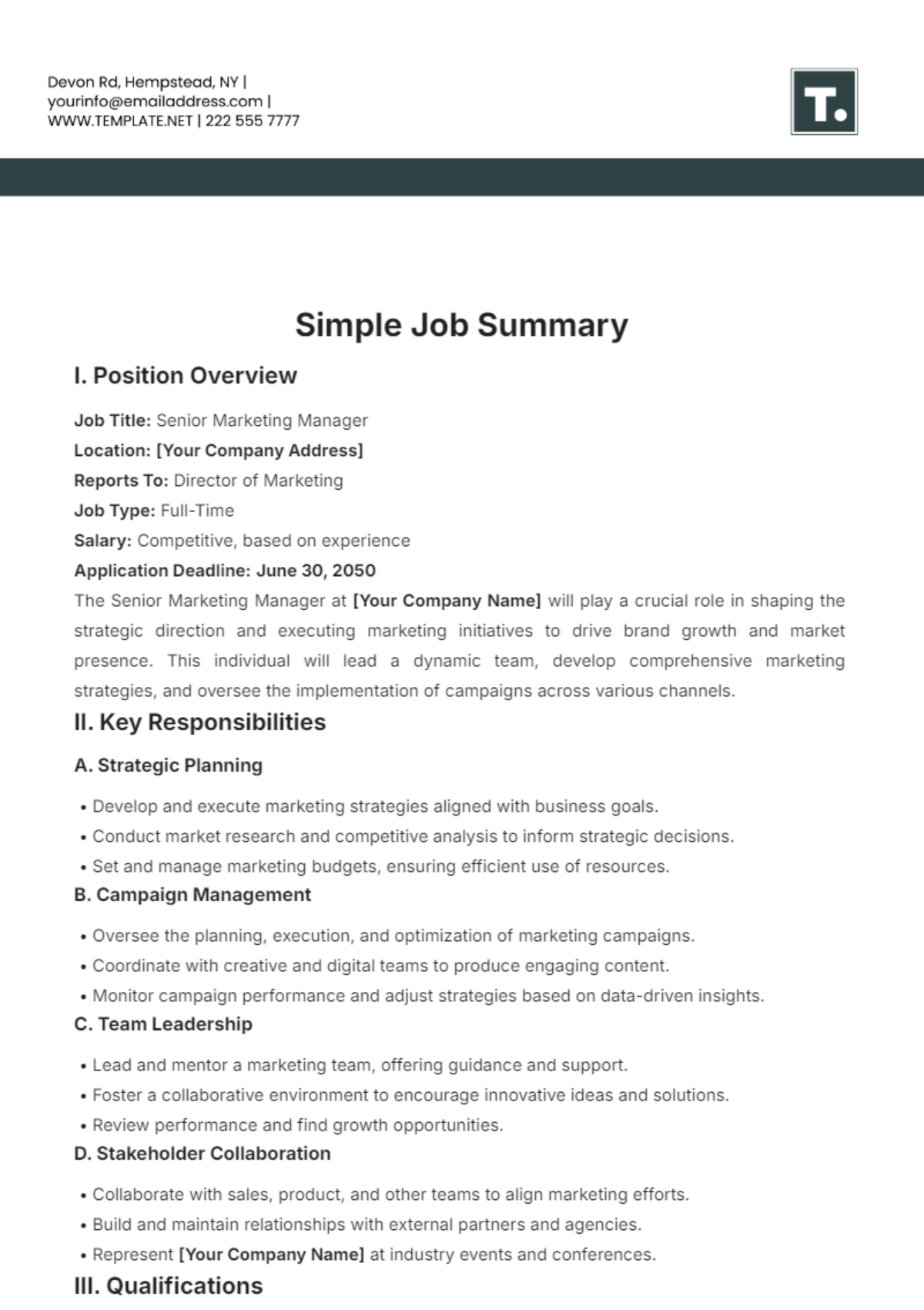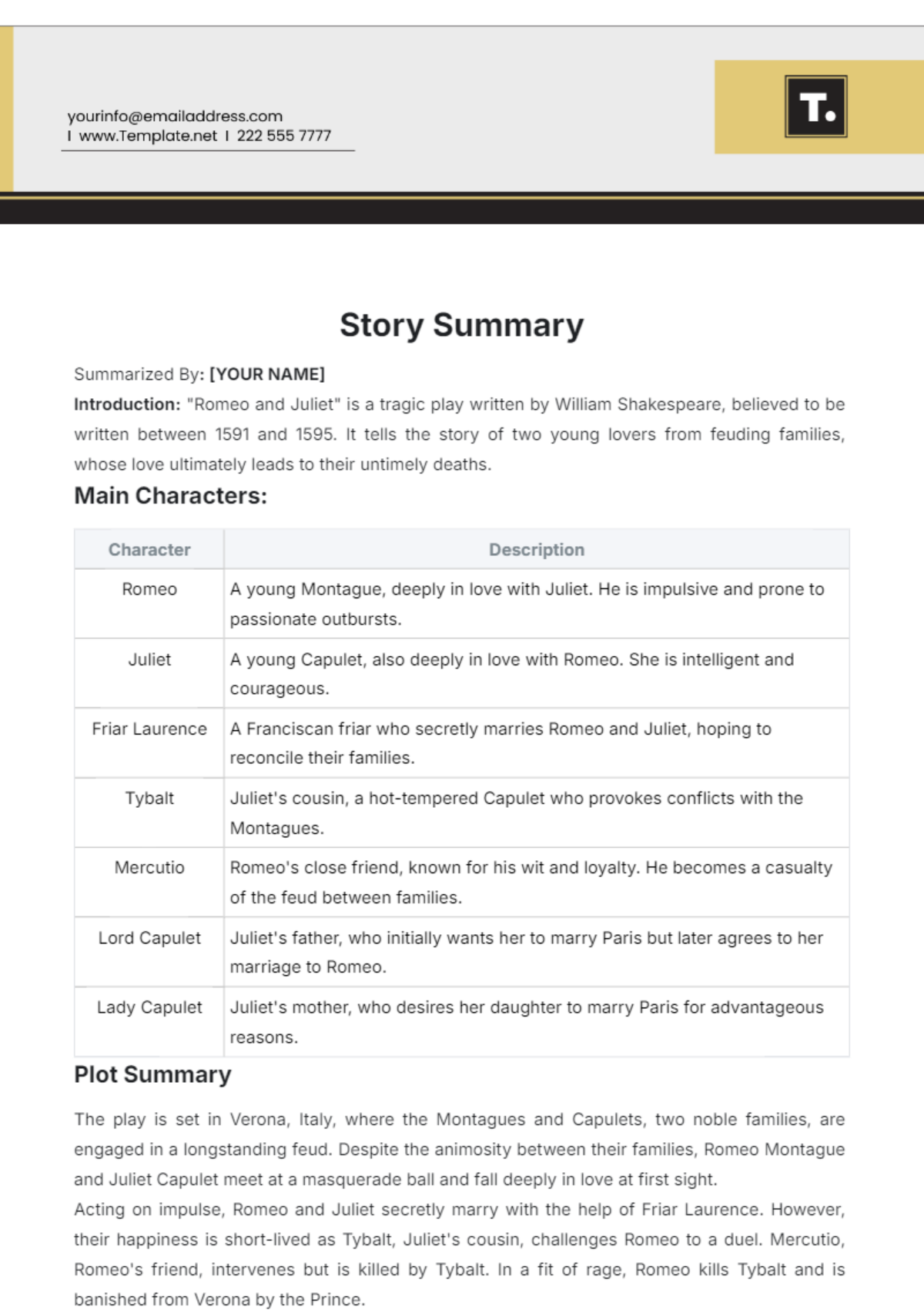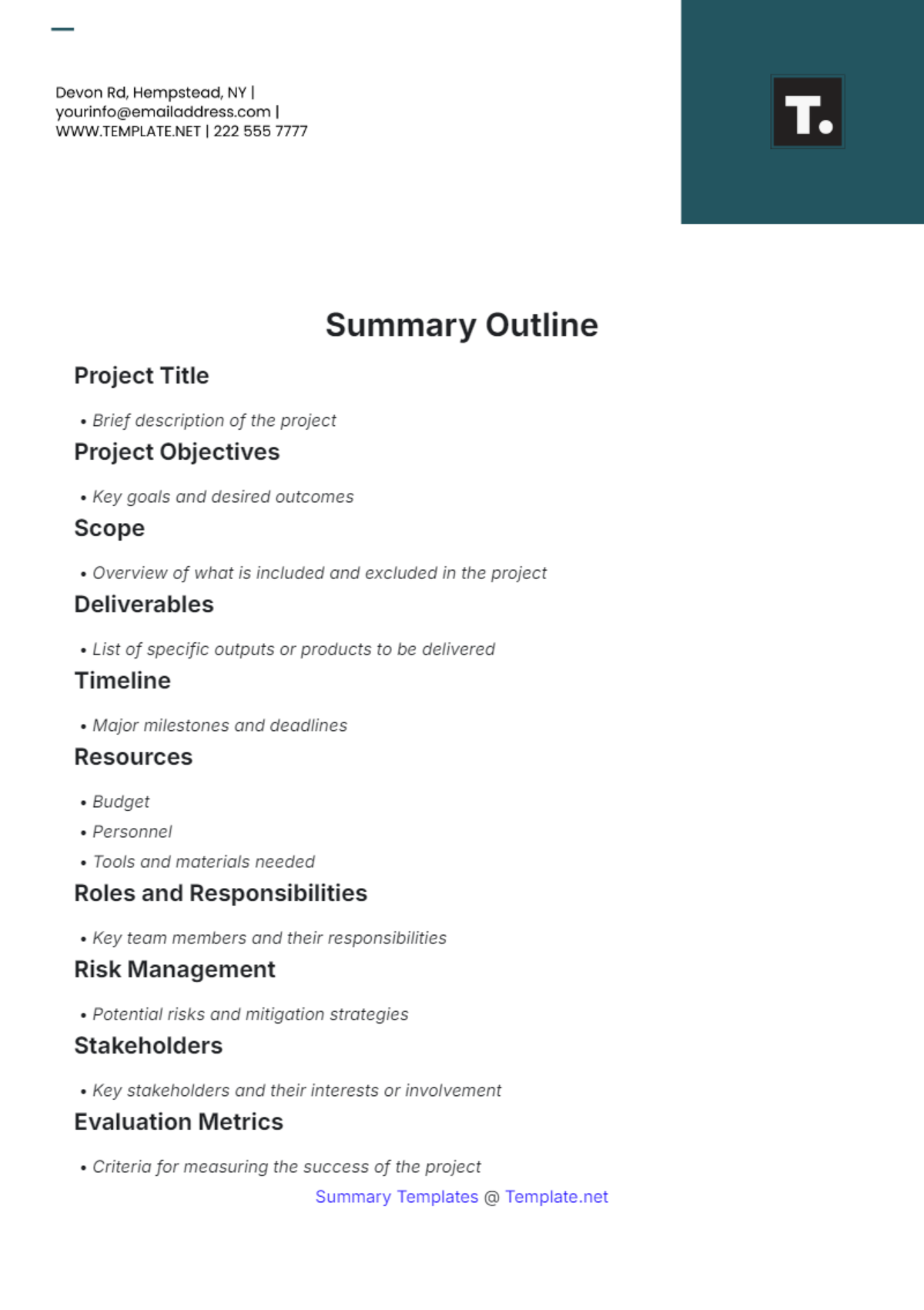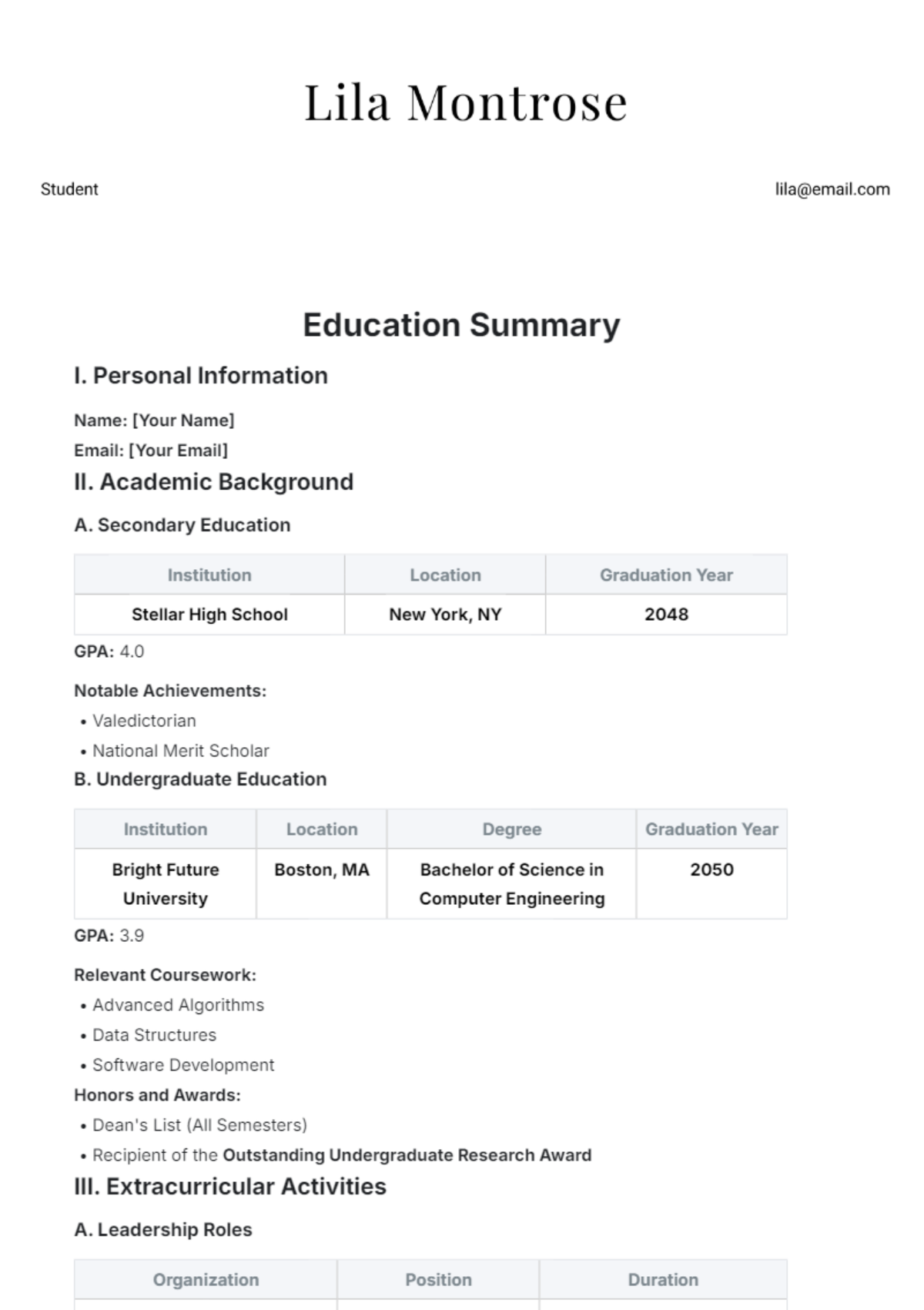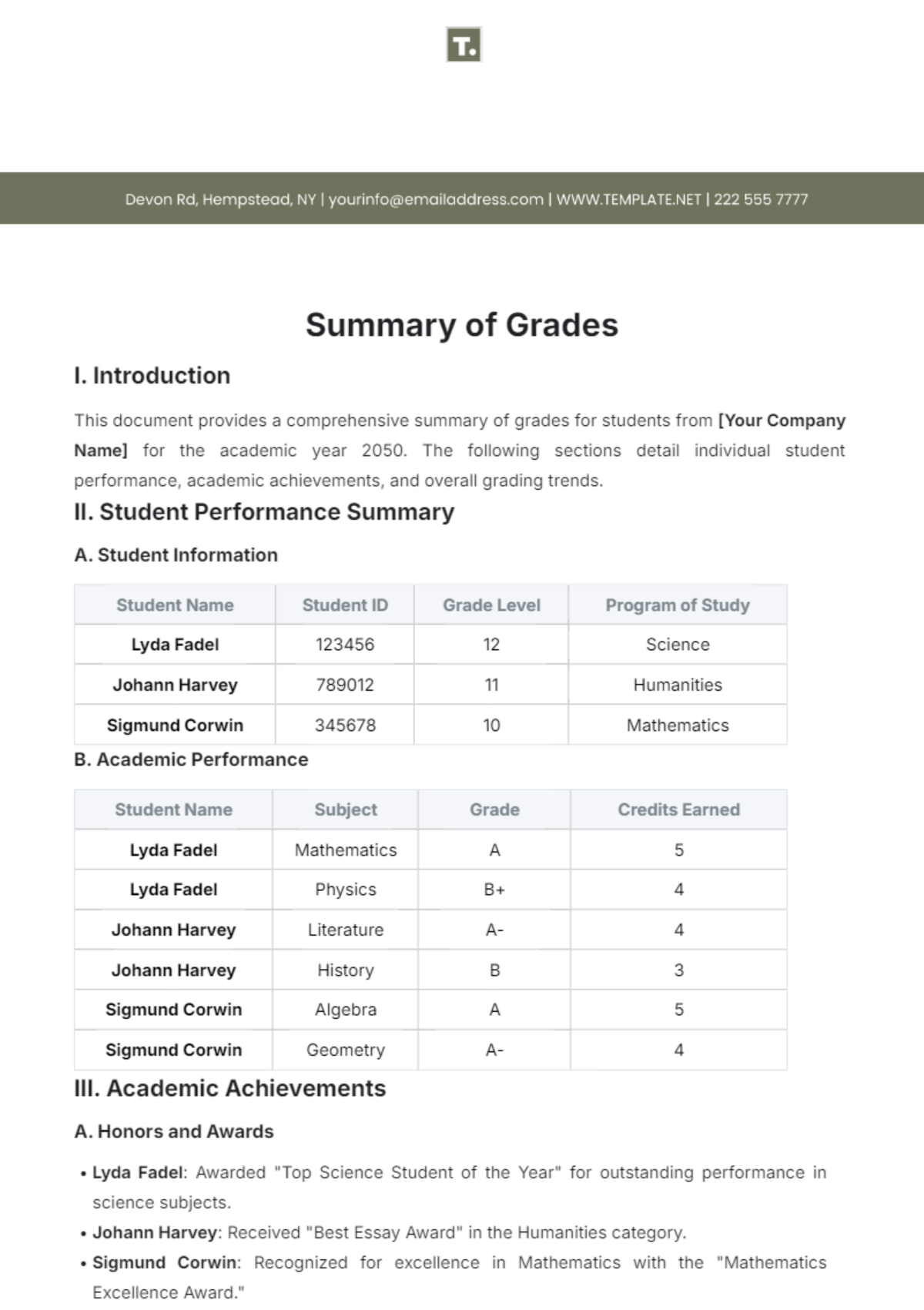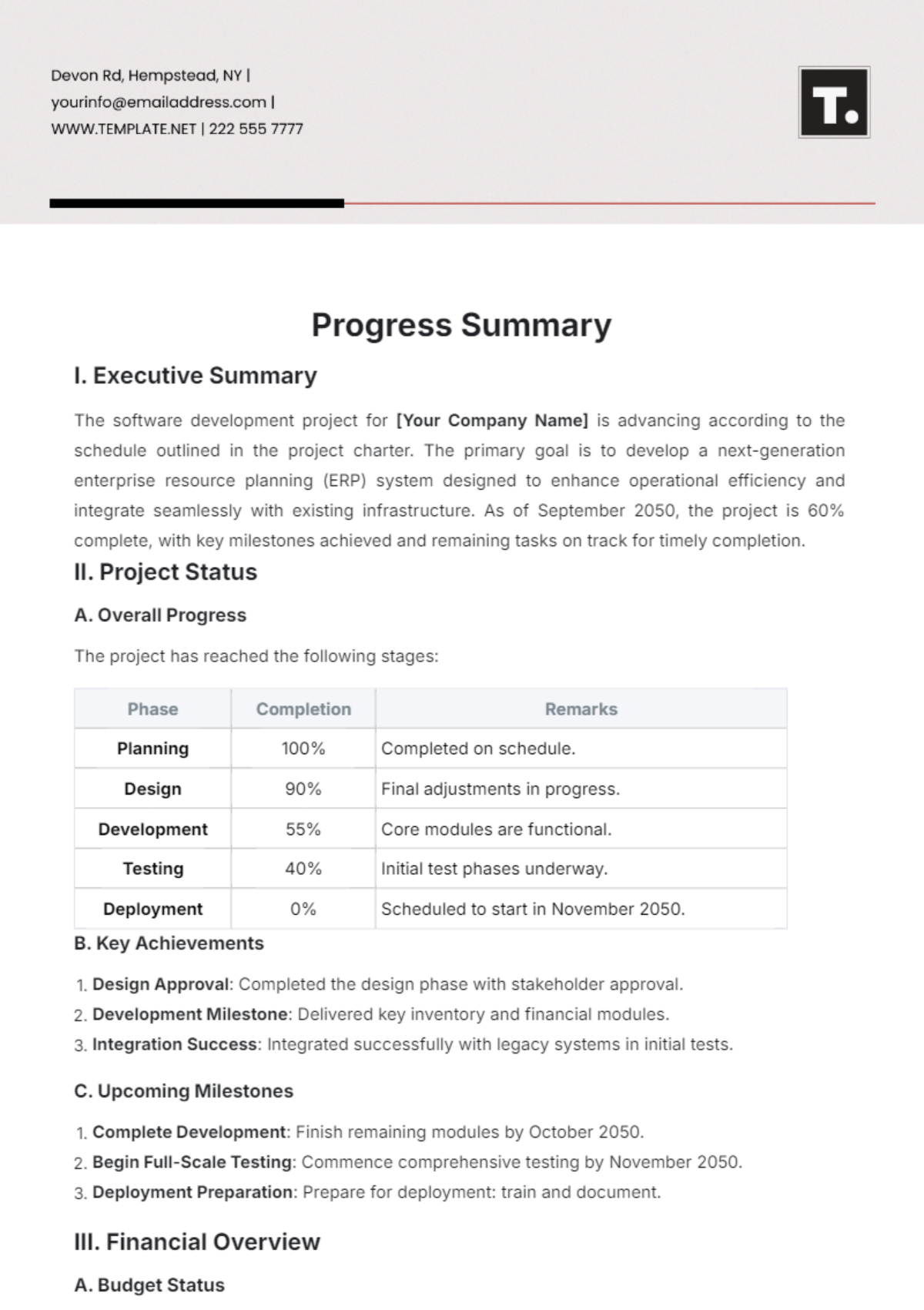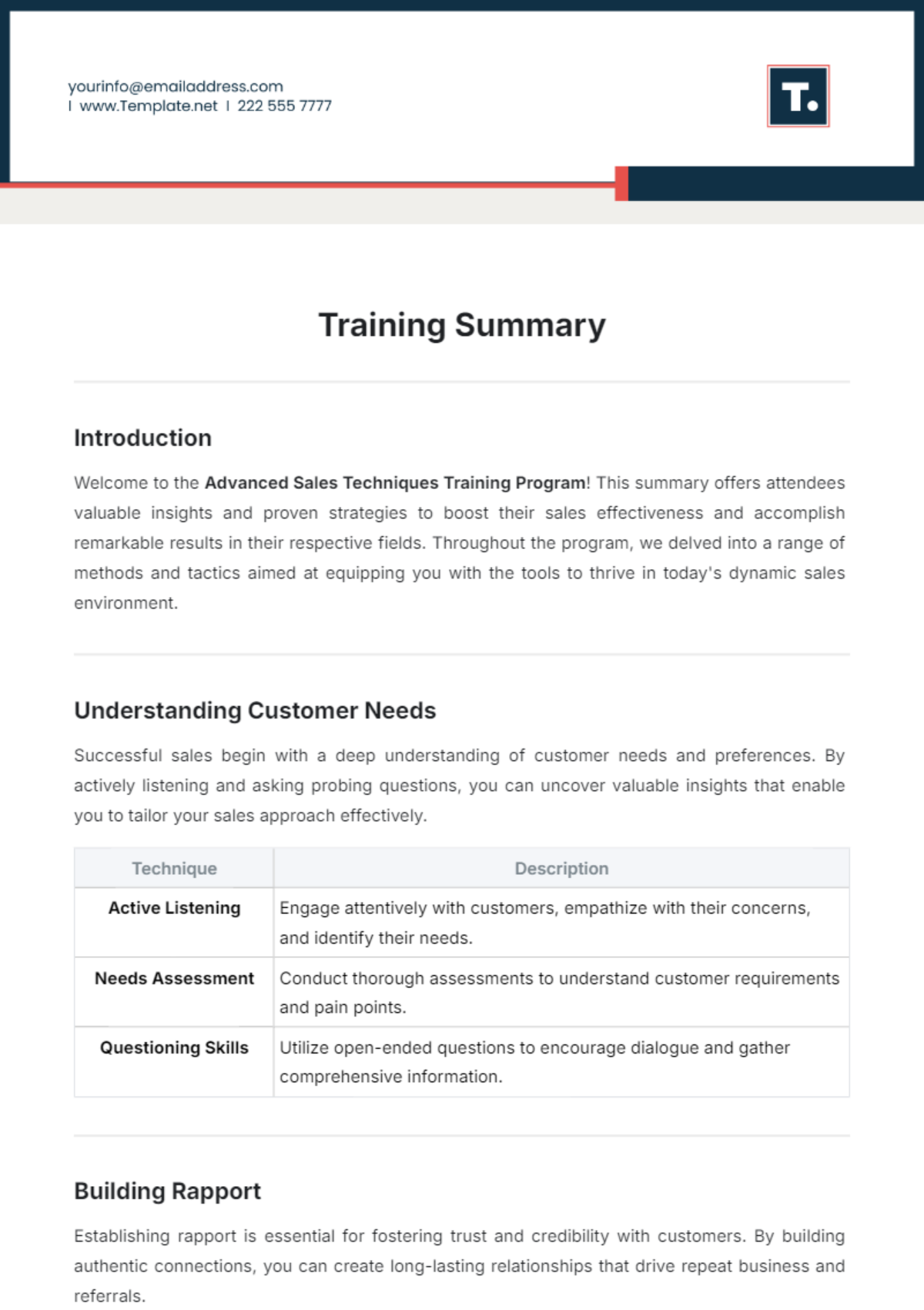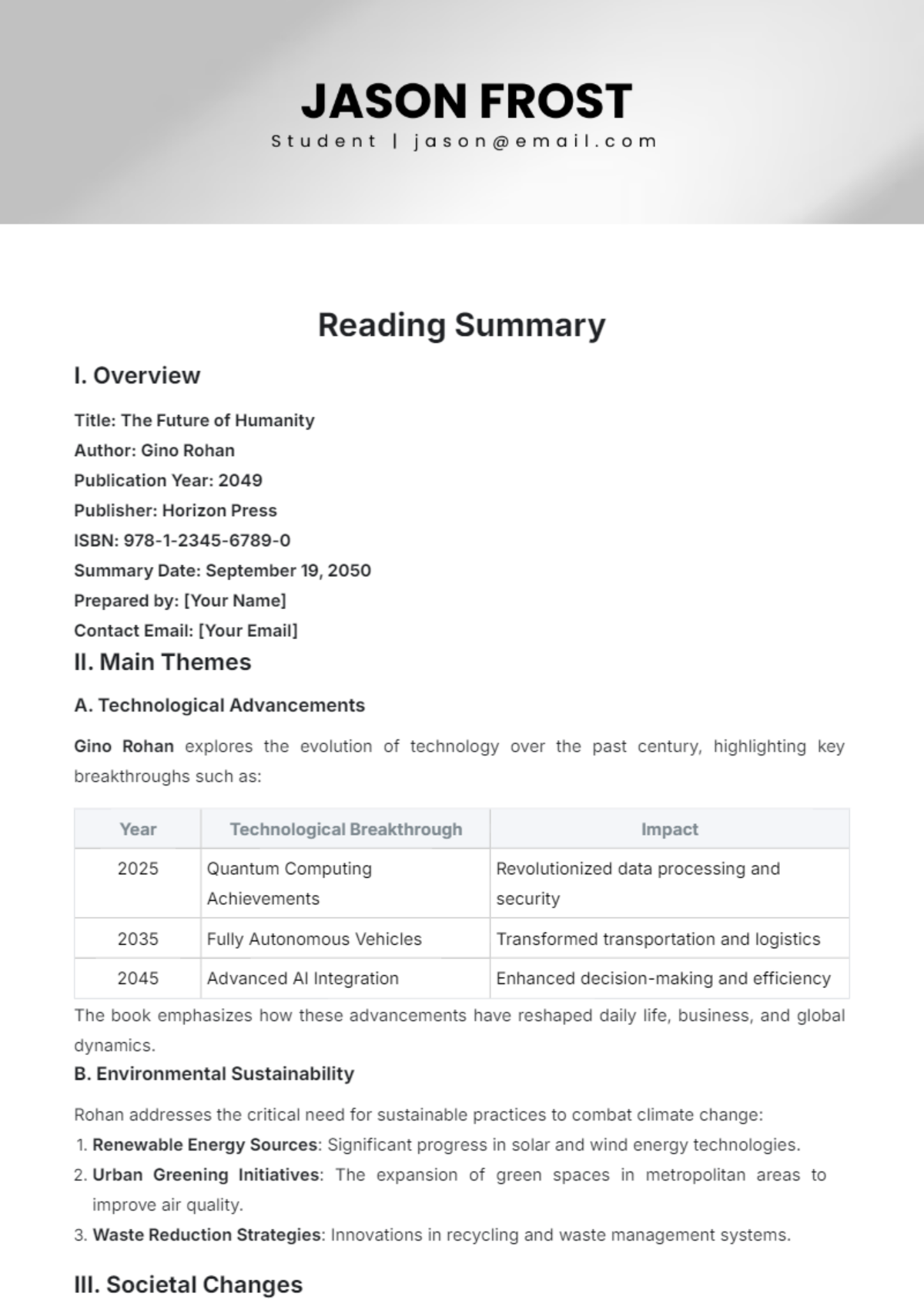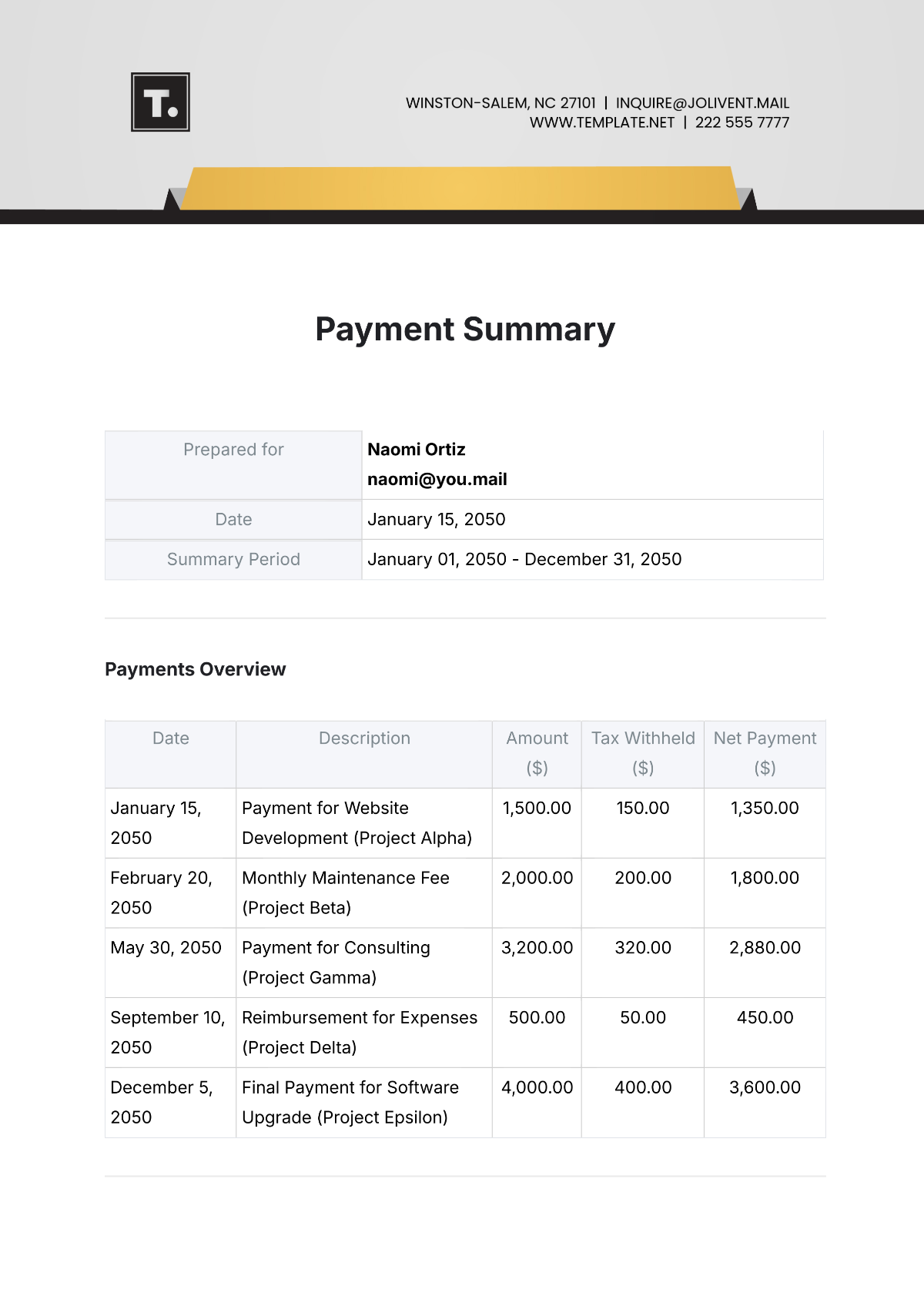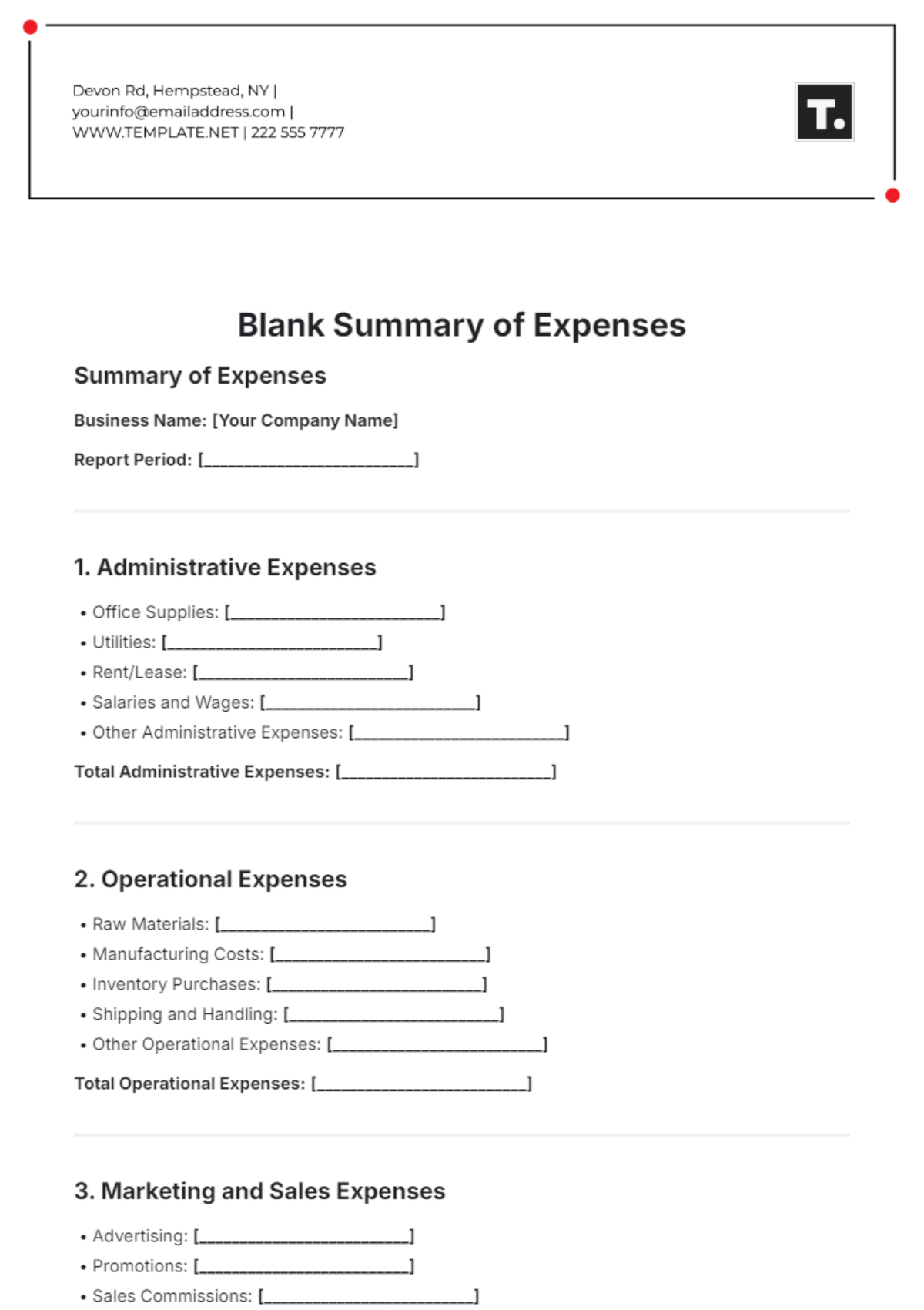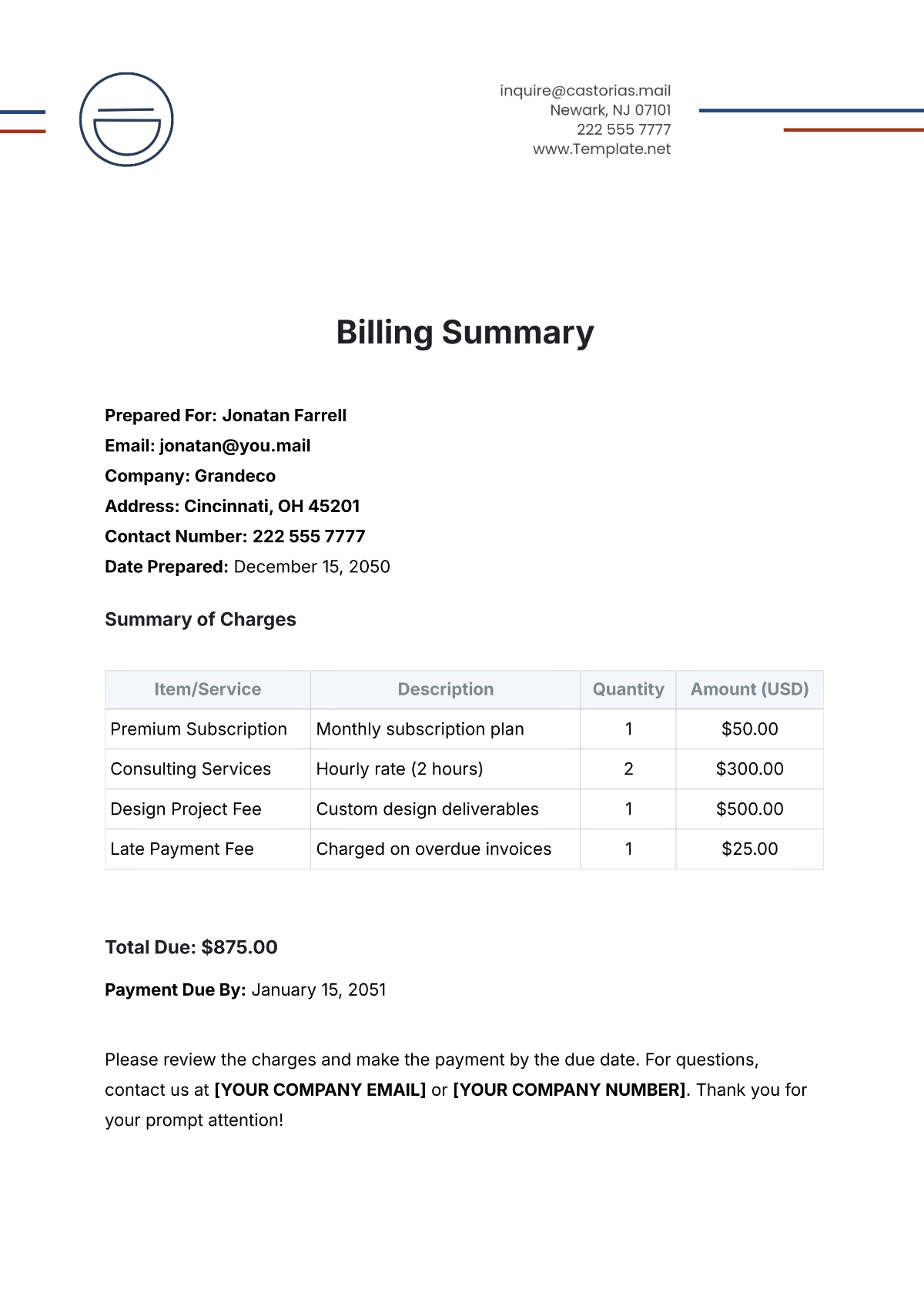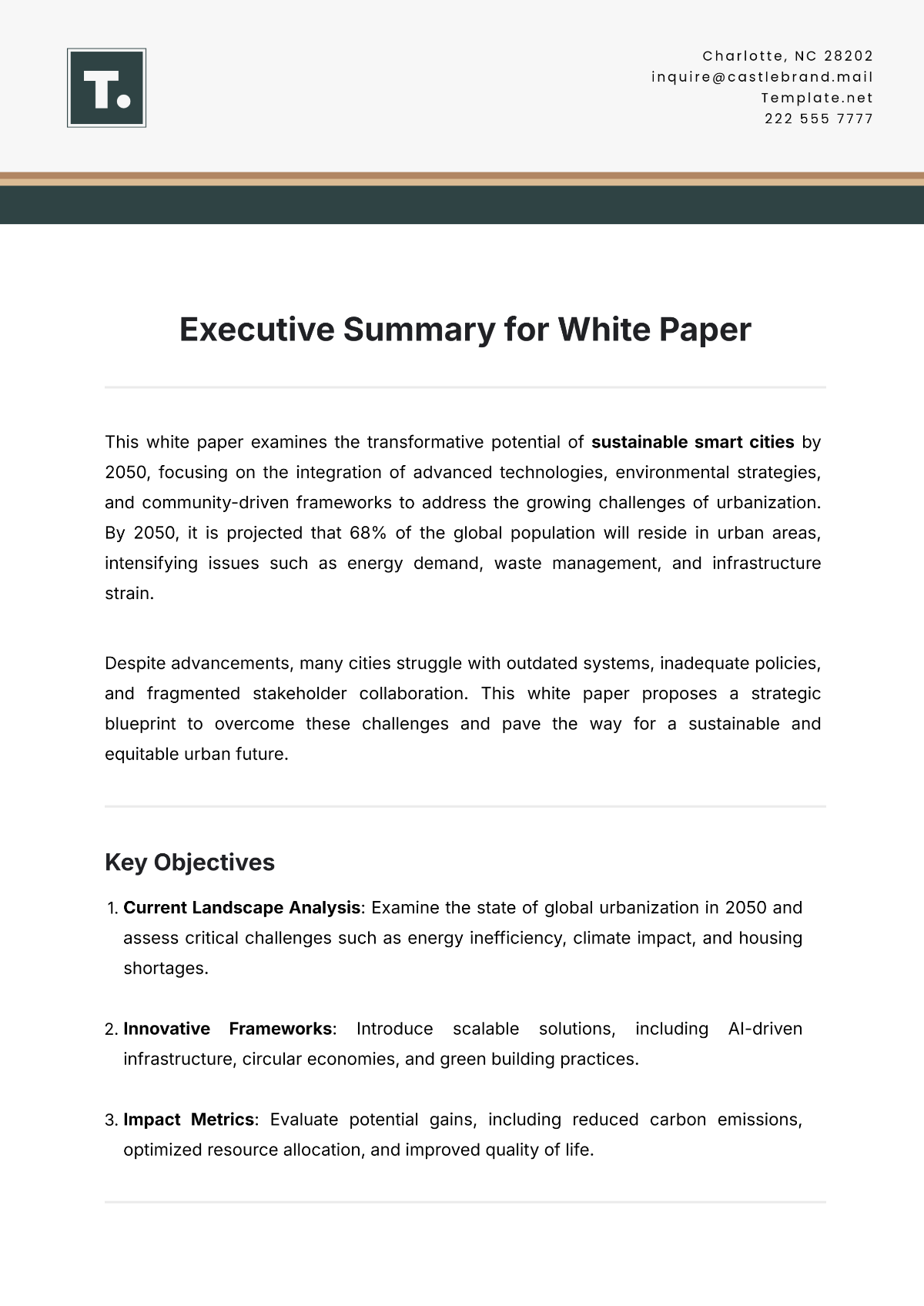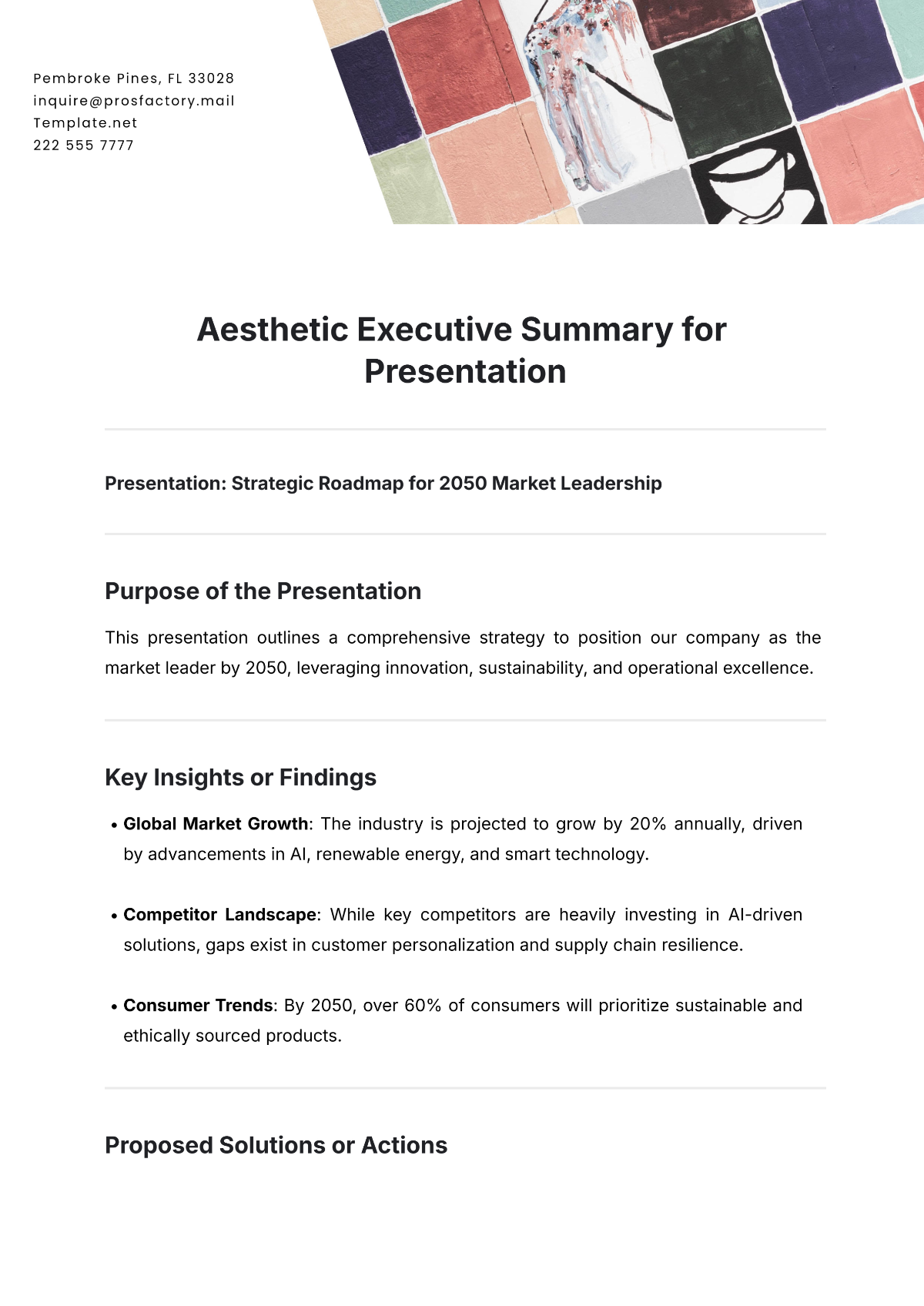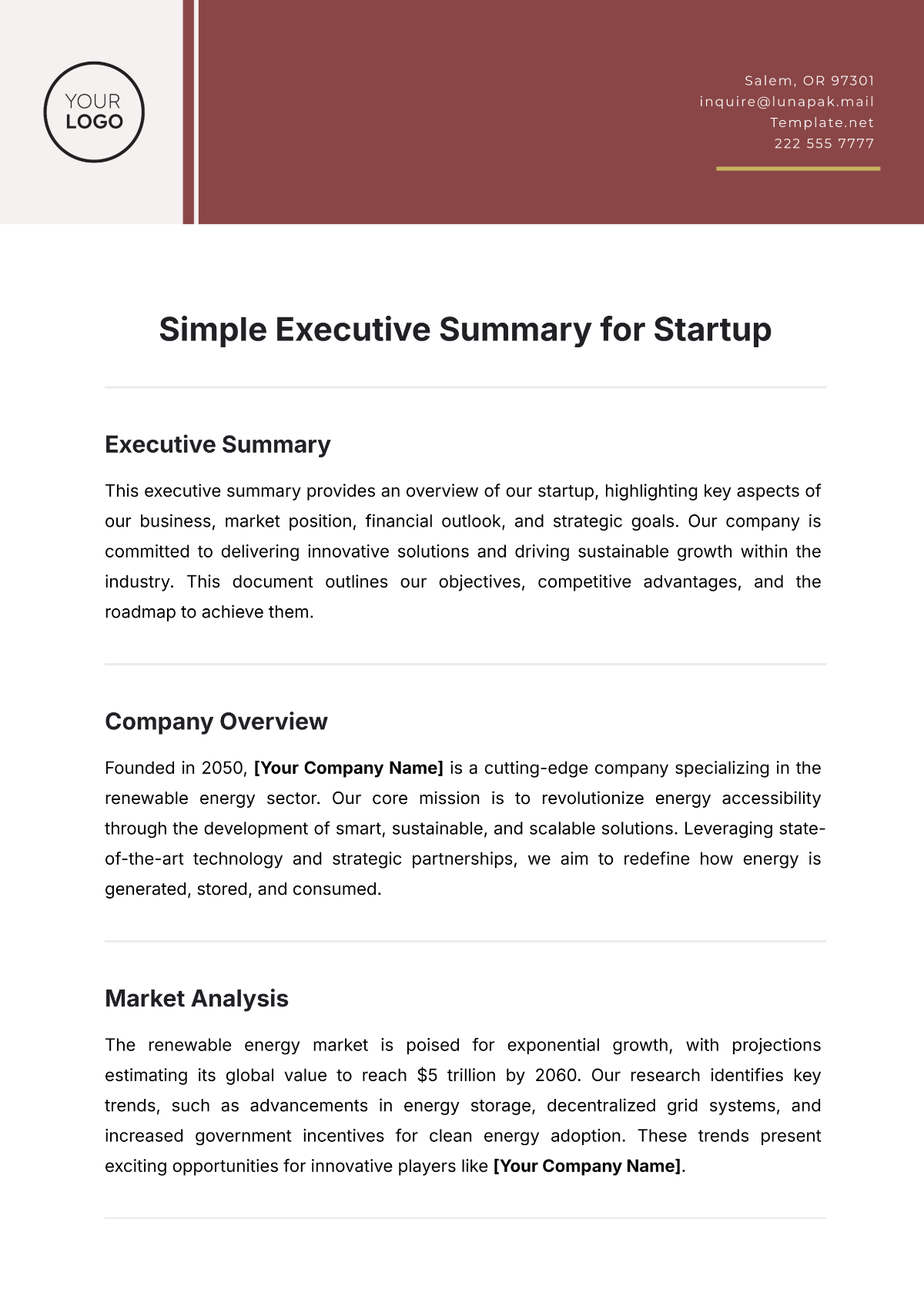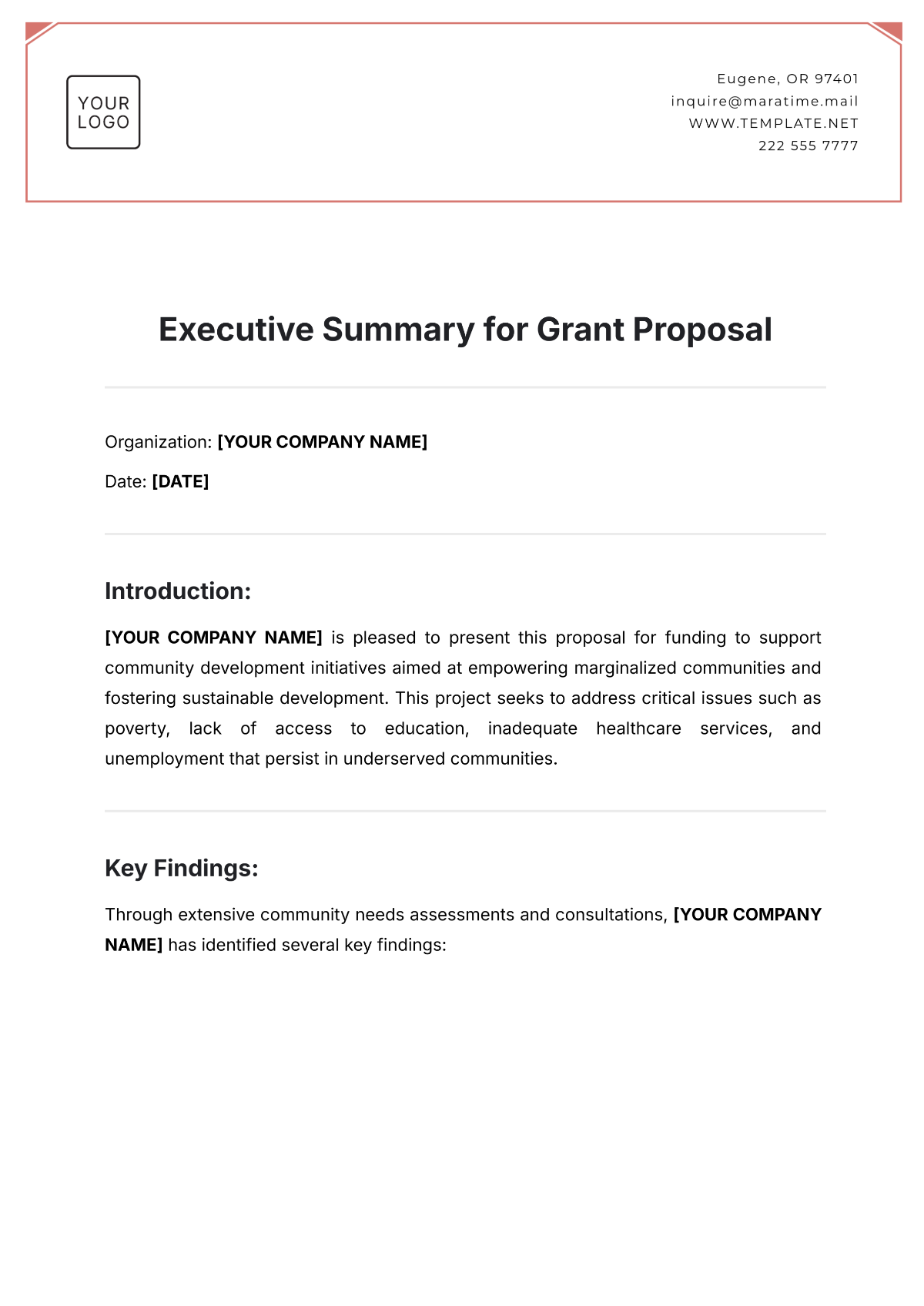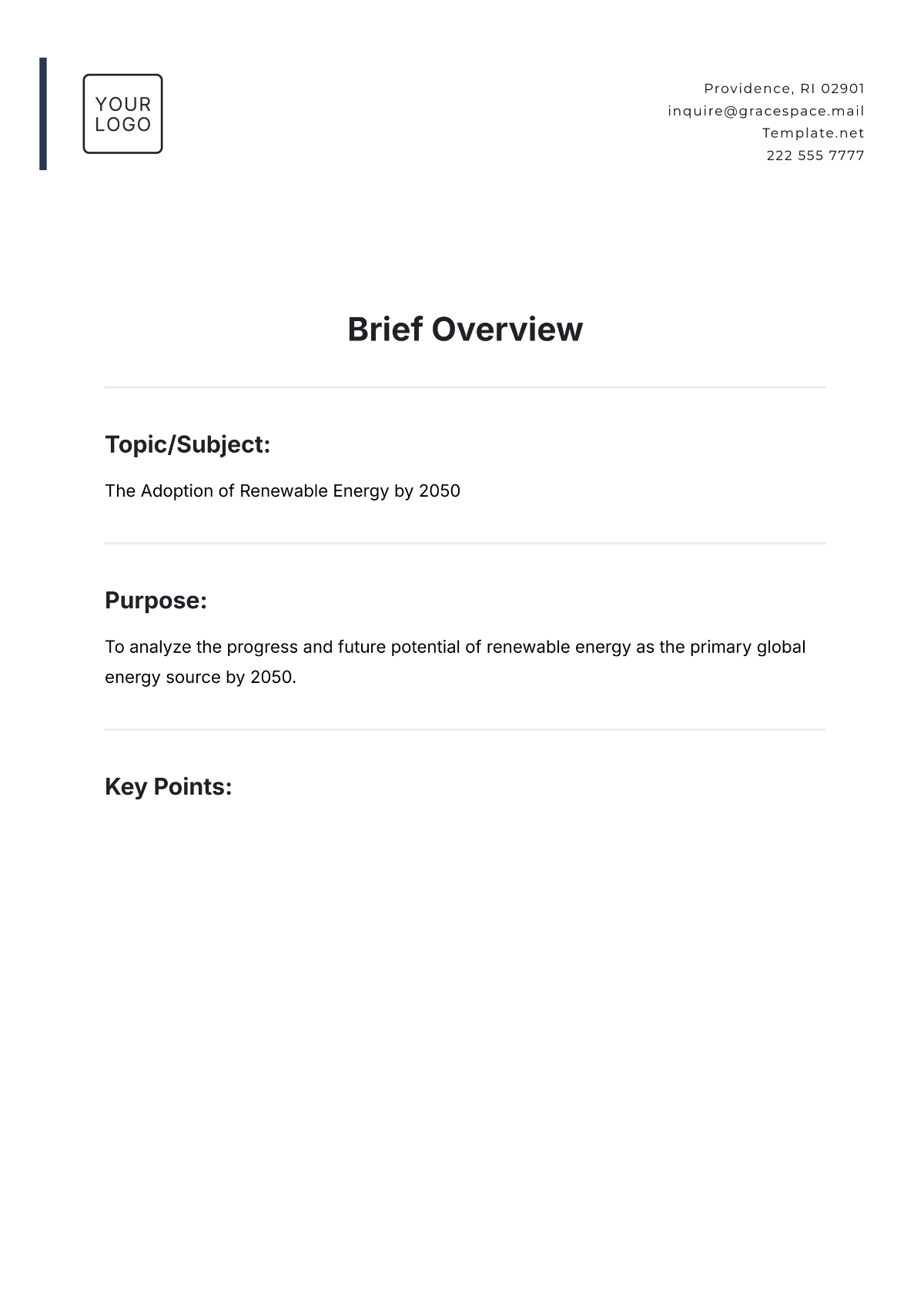Free Professional Management Summary Template
Professional Management Summary
1. Executive Summary
The Project Management Summary provides a comprehensive overview of project performance and progress for the year 2050 and beyond. This summary outlines key project milestones, budgetary considerations, and strategic objectives achieved during the year. It serves as a critical tool for stakeholders to evaluate the project's alignment with organizational goals and future projections.
1.1 Project Overview
Project Name: | Future Tech Innovation Initiative |
Project Manager: | [Your Name] |
Project Start Date: | January 1, 2050 |
Project End Date: | December 31, 2060 |
Objective: | To develop and implement advanced AI technologies that enhance operational efficiency and customer experience. |
1.2 Key Milestones Achieved
The following table summarizes the key milestones achieved in 2050:
Milestone | Description | Completion Date | Status |
|---|---|---|---|
Project Kick-off | Initial project planning and team formation | January 15, 2050 | Completed |
Phase 1 - Research | Completion of foundational research and initial design | March 31, 2050 | Completed |
Phase 2 - Development | Development of prototype AI systems | July 15, 2050 | Completed |
Phase 3 - Testing | Comprehensive testing and refinement of AI prototypes | October 30, 2050 | Completed |
Phase 4 - Implementation | Full-scale implementation and deployment of AI systems | December 15, 2050 | In Progress |
1.3 Financial Summary
The financial overview provides insight into budget allocation and expenditures for the project:
1.3.1 Budget Allocation
Category | Allocated Budget (2050) | Actual Expenditure (2050) | Variance |
|---|---|---|---|
Research & Development | $500,000,000 | $490,000,000 | -$10,000,000 |
Testing | $200,000,000 | $180,000,000 | -$20,000,000 |
Implementation | $300,000,000 | $310,000,000 | +$10,000,000 |
Contingency | $100,000,000 | $50,000,000 | -$50,000,000 |
Total | $1,100,000,000 | $1,030,000,000 | - $70,000,000 |
1.3.2 Forecast for Future Years
The following table provides a forecast of the project budget and expenditure for the next five years:
Year | Projected Budget | Estimated Expenditure | Estimated Variance |
|---|---|---|---|
2051 | $1,200,000,000 | $1,150,000,000 | -$50,000,000 |
2052 | $1,300,000,000 | $1,250,000,000 | -$50,000,000 |
2053 | $1,400,000,000 | $1,350,000,000 | -$50,000,000 |
2054 | $1,500,000,000 | $1,450,000,000 | -$50,000,000 |
2055 | $1,600,000,000 | $1,550,000,000 | -$50,000,000 |
2. Project Performance
2.1 Key Performance Indicators (KPIs)
The following KPIs were used to measure project success in 2050:
KPI | Target | Achieved | Status |
|---|---|---|---|
AI System Efficiency | 95% accuracy | 93% accuracy | Slightly Below |
Project Milestone Adherence | 100% on time | 90% on time | On Track |
Budget Adherence | +/- 5% of budget | +/- 6% of budget | Slightly Over |
2.2 Risks and Mitigation Strategies
Identified Risks:
Technology Integration Issues: The integration of advanced AI technologies faced unexpected challenges.
Budget Overruns: Slight overspending was noted in the implementation phase.
Mitigation Strategies:
Enhanced Testing: Increased testing phases to address technology integration issues.
Revised Budget Planning: Adjusted future budget forecasts to account for unforeseen expenses.
3. Strategic Objectives
3.1 Achievements
Technological Advancements: Successfully developed a prototype AI system with enhanced capabilities for operational efficiency.
Stakeholder Engagement: Established effective communication channels with all stakeholders, ensuring alignment with project goals.
3.2 Future Objectives
Expansion of AI Capabilities: Further development and refinement of AI technologies to meet emerging industry needs.
Global Implementation: Rollout of AI systems to international markets by 2060.
4. Conclusion
The Project Management Summary for 2050 highlights a year of significant progress and achievement. While some challenges were encountered, the project remains on track with its long-term goals. Ongoing efforts will focus on addressing the identified risks, optimizing budget utilization, and driving technological innovation to ensure continued success in the coming years.
